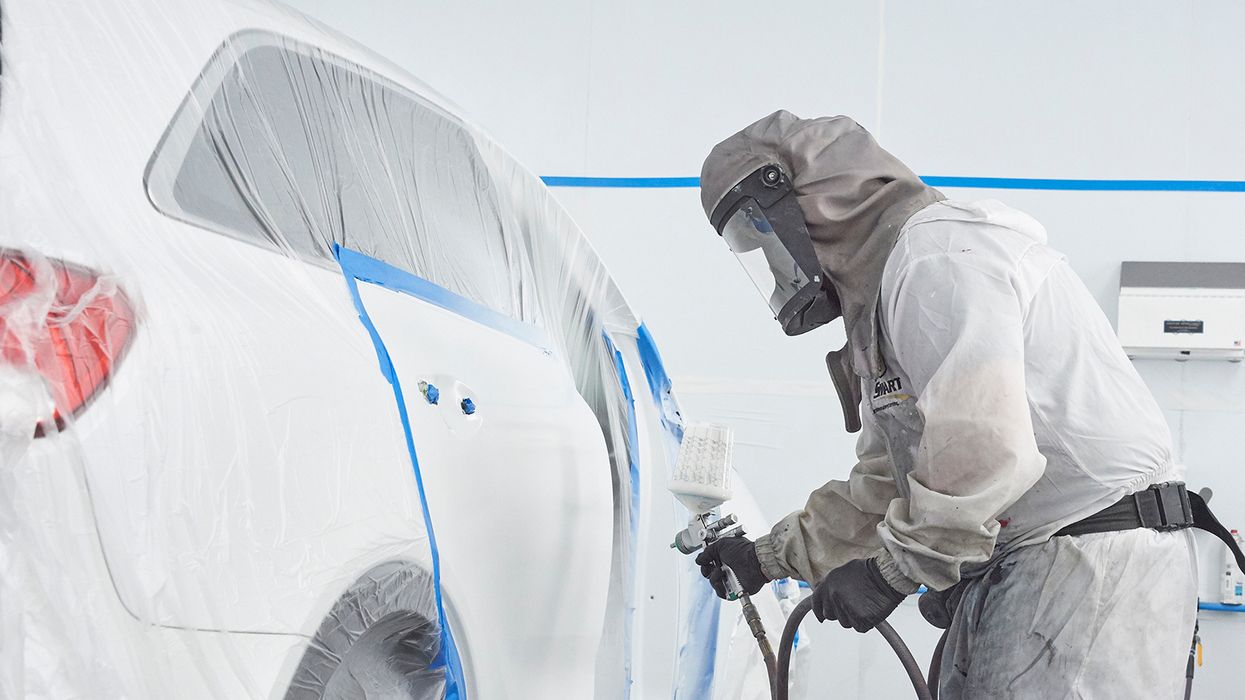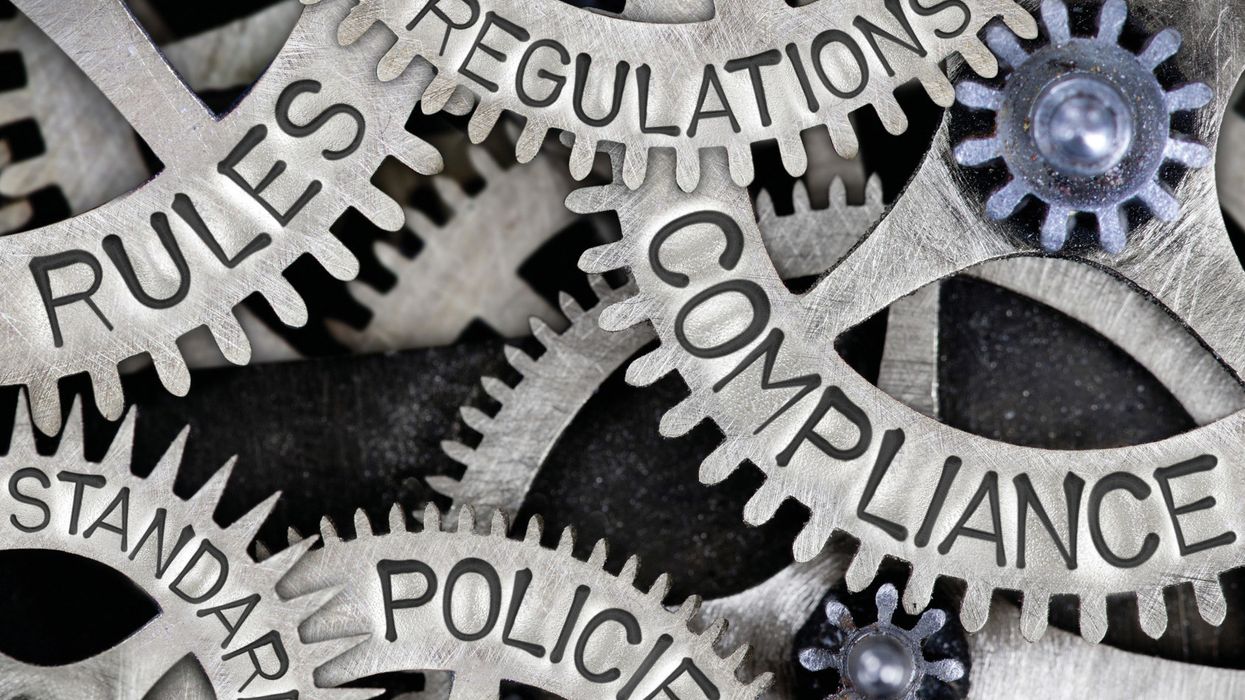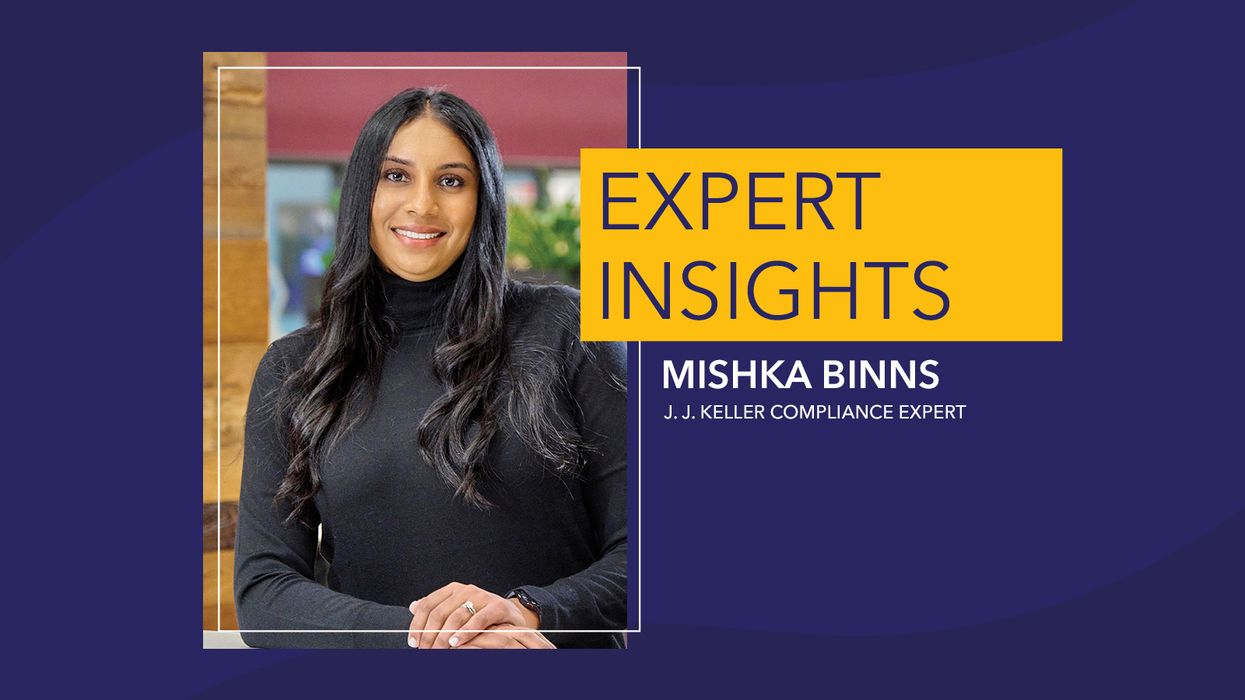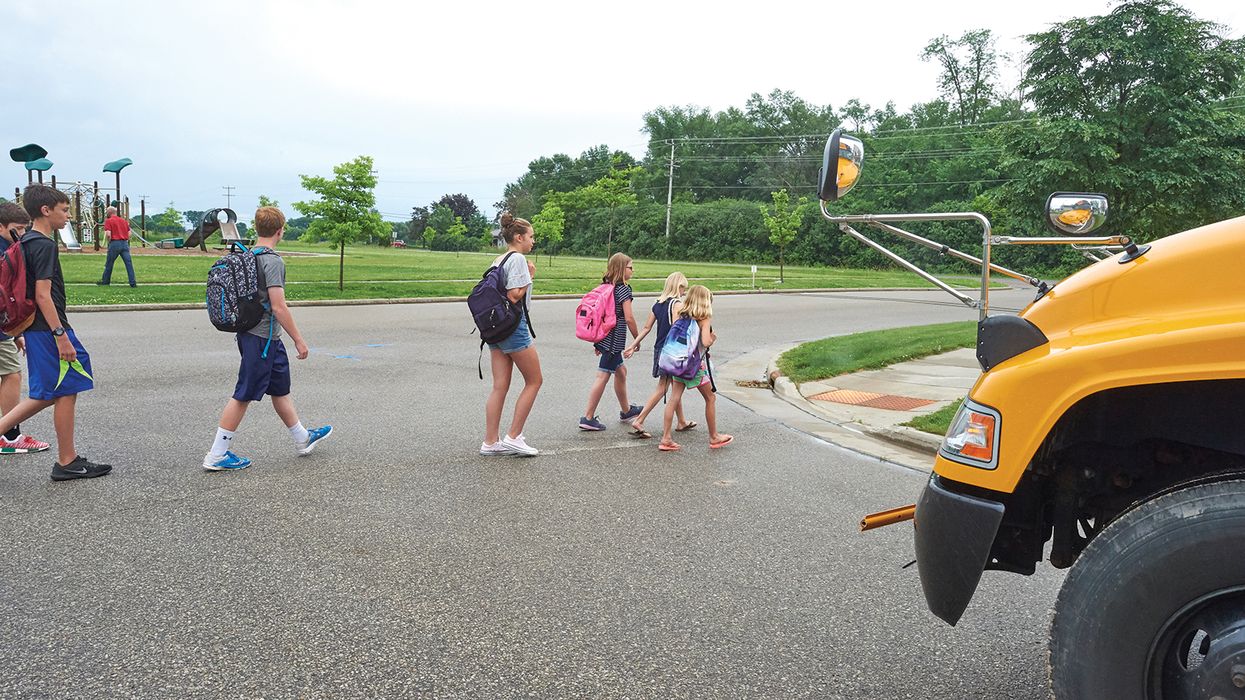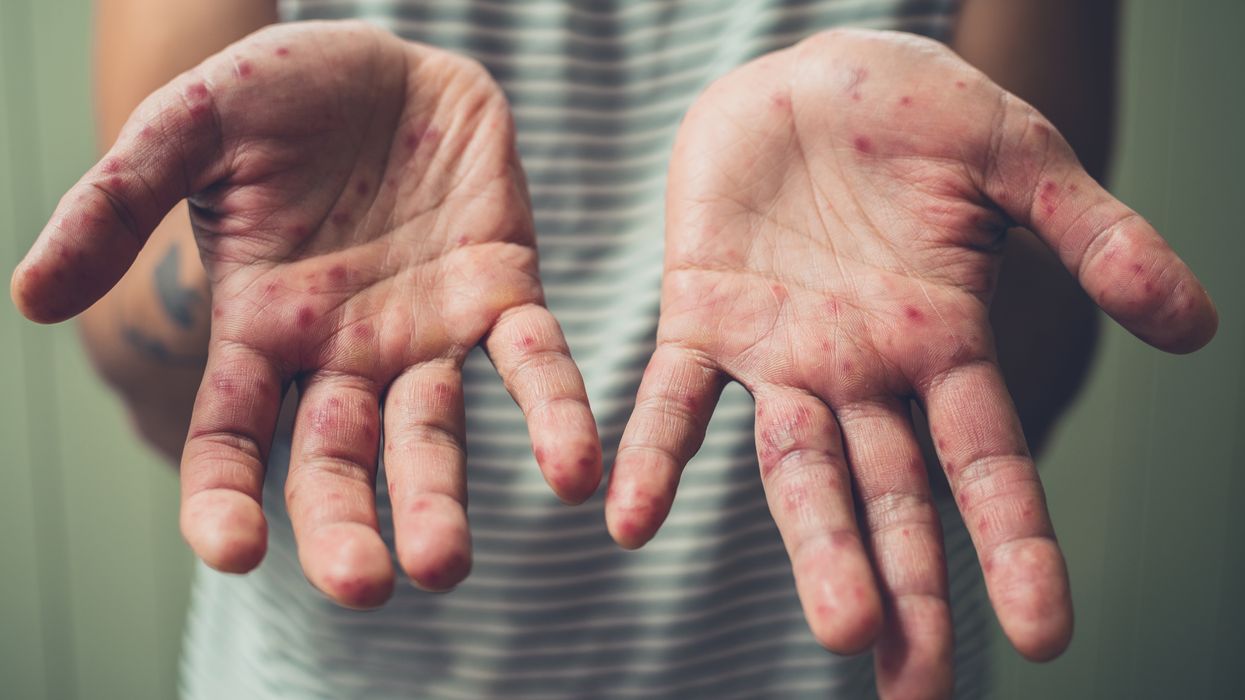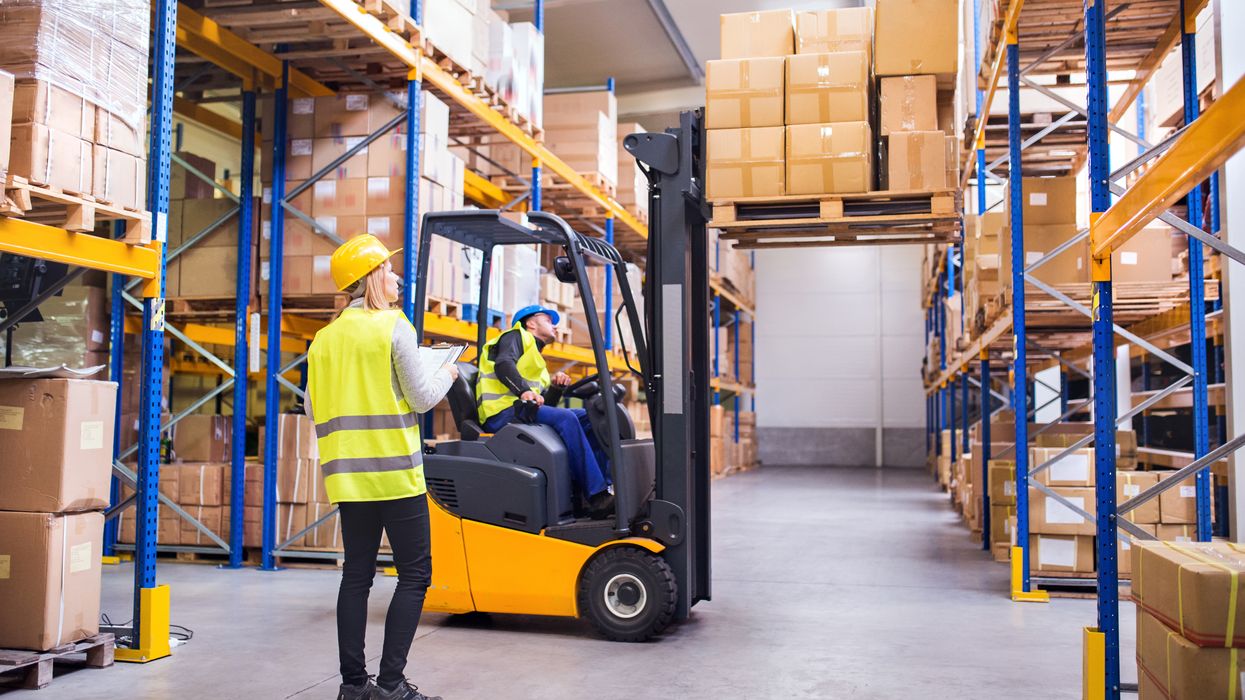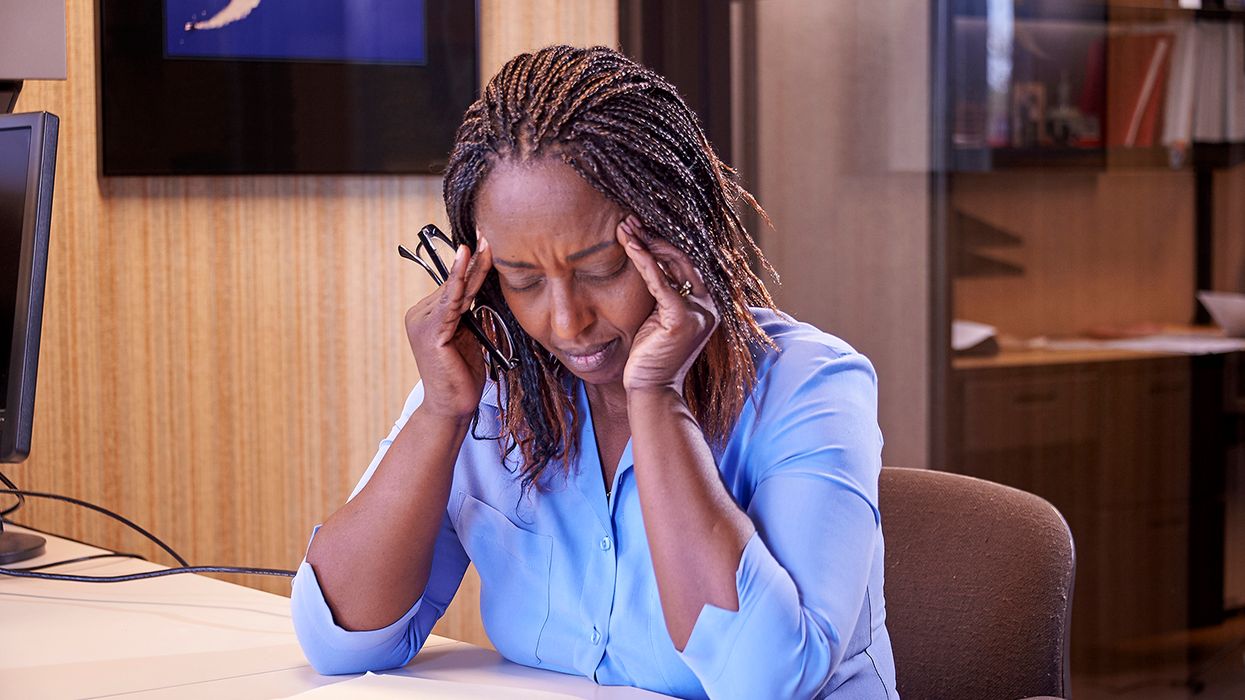{{ post.roar_specific_data.subject }}
{{ post.roar_specific_data.subjecttopic }}
{{ post.roar_specific_data.PublishDate }}
JOIN TODAY TO CONTINUE READING THIS ARTICLE & OTHER INDUSTRY NEWS!
You'll also get exclusive access to:
A database of easy-to-understand regulationsAsk unlimited questions to our expertsPre-led discussions forumsAnd more
TRY IT FREE TODAY
Already have an account? Log in now.
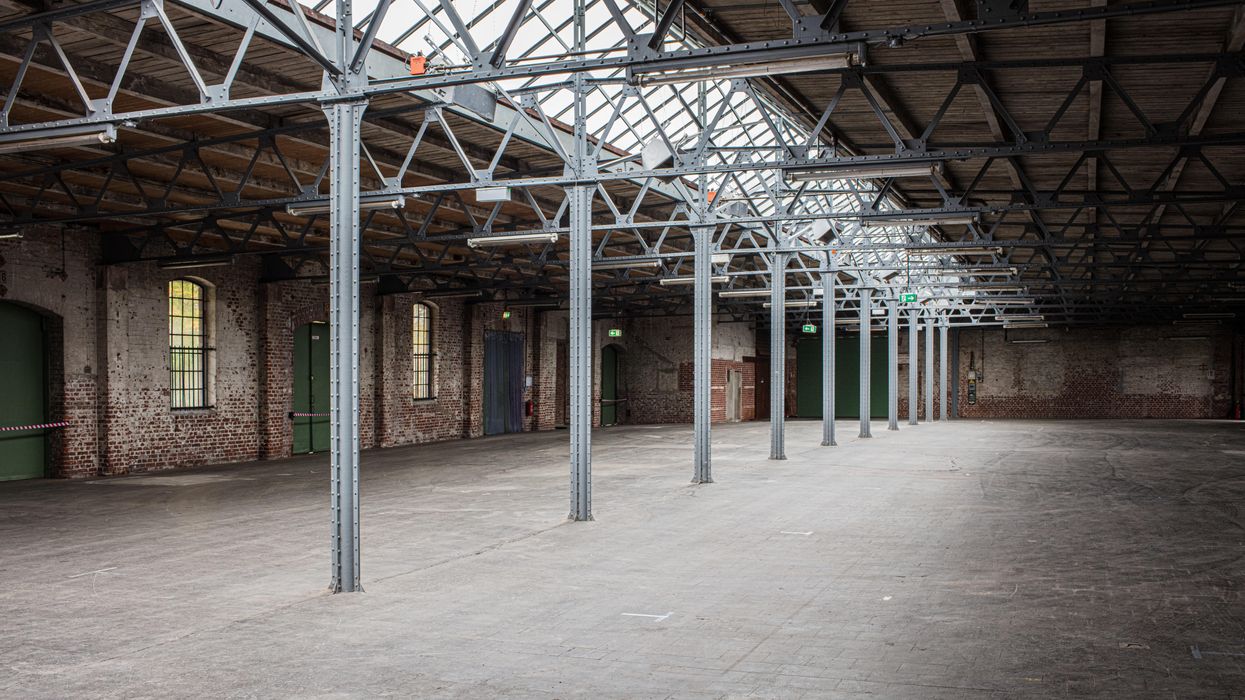
FMCSAs hours of service rules
See More
RELATED NEWS

Specialized Industries
Go beyond the regulations! Visit the Institute for in-depth guidance on a wide range of compliance subjects in safety and health, transportation, environment, and human resources.
J. J. Keller® COMPLIANCE NETWORK is a premier online safety and compliance community, offering members exclusive access to timely regulatory content in workplace safety (OSHA), transportation (DOT), environment (EPA), and human resources (DOL).

Interact With Our Compliance Experts
Puzzled by a regulatory question or issue? Let our renowned experts provide the answers and get your business on track to full compliance!

Upcoming Events
Reference the Compliance Network Safety Calendar to keep track of upcoming safety and compliance events. Browse by industry or search by keyword to see relevant dates and observances, including national safety months, compliance deadlines, and more.
SAFETY & COMPLIANCE NEWS
Keep up with the latest regulatory developments from OSHA, DOT, EPA, DOL, and more.
REGSENSE® REGULATORY REFERENCE
Explore a comprehensive database of word-for-word regulations on a wide range of compliance topics, with simplified explanations and best practices advice from our experts.
THE J. J. KELLER INSTITUTE
The Institute is your destination for in-depth content on 120+ compliance subjects. Discover articles, videos, and interactive exercises that will strengthen your understanding of regulatory concepts relevant to your business.
ADD HAZMAT, ENVIRONMENTAL, & HR RESOURCES
Unlock exclusive content offering expert insights into hazmat, environmental, and human resources compliance with a COMPLIANCE NETWORK EDGE membership.
DIRECT ACCESS TO COMPLIANCE EXPERTS
Struggling with a compliance challenge? Get the solution from our in-house team of experts! You can submit a question to our experts by email, set up a phone or video call, or request a detailed research report.
EVENTS
Register to attend live online events hosted by our experts. These webcasts and virtual conferences feature engaging discussions on important compliance topics in a casual, knowledge-sharing environment.
Most Recent Highlights In Environmental
NewsIndustry NewsHazardous Air PollutantsCAA ComplianceEnvironmentalIn-Depth ArticleFocus AreaEnglishVolatile Organic CompoundsAir ProgramsUSA
2025-08-25T05:00:00Z
Avoiding compliance pitfalls: understanding the overlap between HAPs and VOCs
Understanding how hazardous air pollutants (HAPs) and volatile organic compounds (VOCs) are counted is key to accurate reporting and staying in compliance. These pollutants often overlap, but how they are treated depends on the situation – especially when comparing emission inventories to permitting rules. Misunderstanding the differences can lead to underreporting, permit mistakes, and other compliance problems. This article will also discuss how state rules can make things more complex.
Emission inventories: often counted together
Emission inventories help regulatory agencies track actual emissions from facilities over time. These records support air quality models, guide policy, and help protect public health.
In many cases, HAPs that are also VOCs (like toluene or xylene) are included in the total VOC count. For example, the U.S. Environmental Protection Agency (EPA) includes HAP-VOCs in its National Emissions Inventory (NEI), which supports regional air quality models like the Community Multiscale Air Quality (CMAQ) system.
Frequently Asked Question: What is the National Emissions Inventory?
As an example, the Texas Commission on Environmental Quality (TCEQ) recommends using conservative “first cut” estimates for both VOCs and HAPs. This makes early reporting easier and helps avoid underestimating emissions.
Potential to emit (PTE): counted separately
PTE calculations are used to determine a facility’s regulatory status—such as whether it qualifies as a major source under New Source Review (NSR) or Title V or is subject to Maximum Achievable Control Technology (MACT) standards.
In this context, HAPs and VOCs are counted separately because they are subject to different thresholds:
- HAPs: 10 tons per year (TPY) for a single HAP, or 25 TPY for total HAPs.
- VOCs: Typically 100 TPY for major source classification under New Source Review (NSR), though this can vary by attainment status.
This separation is critical. A facility might exceed the HAP threshold and trigger MACT requirements, even if its VOC emissions are below NSR thresholds—or vice versa. As an example, if a paint booth has the potential to emit 500 pounds of toluene, this is counted as 500 pounds of HAP and 500 pounds of VOC. Even though that seems like double-counting for the same emission, it is important to include in both totals separately.
State-by-state variability
While federal rules provide a baseline, states often have their own interpretations and requirements:
- Ohio: Offers detailed guidance on calculating VOC and HAP emissions separately for permitting purposes. Facilities must demonstrate compliance with both sets of thresholds.
- Texas: Uses a tiered approach. Facilities begin with conservative estimates and refine them only if emissions approach regulatory thresholds.
- California: Maintains stricter standards and often requires separate reporting for toxic air contaminants (TACs), which include many HAPs. The state’s Air Toxics Hot Spots Program adds another layer of complexity.
Why the distinction matters
Failing to understand how HAPs and VOCs are counted can lead to serious compliance issues:
- Permitting errors: Misclassification can result in incorrect permit applications or missed regulatory obligations.
- Underreporting risks: Facilities may inadvertently underreport emissions if they assume HAPs are always included in VOC totals.
- Modeling impacts: While combined inventories help with regional modeling, they may obscure the risks posed by individual pollutants.
Recommendations for facilities
To stay compliant and avoid costly mistakes:
- Check state guidance: Requirements vary widely. Always consult your state environmental agency.
- Use Safety Data Sheet (SDS) data: Identify both VOC and HAP content in raw materials.
- Maintain separate records: Especially for PTE calculations, keep VOC and HAP data distinct.
- Consult experts: When in doubt, seek help from J. J. Keller & Associates subject matter experts using the Expert Help feature.
Key to Remember: The way HAPs and VOCs are counted depends heavily on context. Understanding these distinctions – and how they vary by state – is key to maintaining compliance and protecting air quality.
NewsPesticidesRestricted Use PesticidesPesticide Registration and LabelingIn-Depth ArticleEnglishSafety Data SheetsIndustry NewsSafety & HealthGeneral Industry SafetyAgriculture SafetyEnvironmentalHazard CommunicationFocus AreaPesticidesUSA
2025-08-21T05:00:00Z
Clock ticking for bilingual pesticide labels; EPA reveals tracking method and Q&As
A 2022 law requires that some sections of end-use pesticide product labeling be translated into Spanish. So, now the Environmental Protection Agency (EPA) has issued a notice requesting comments on how it wants to track the adoption of bilingual labeling. The agency also updated its Bilingual Labeling Questions & Answers webpage.
Spanish translations prompted by law
The Pesticide Registration Improvement Act (PRIA) has been enacted and reauthorized five times. The latest version (PRIA 5) was signed on December 29, 2022. It amended the Federal Insecticide, Fungicide, and Rodenticide Act (FIFRA) to require Spanish language translation for sections of the end-use pesticide product labels. However, those translations are only required where translation is available in EPA's Spanish Translation Guide for Pesticide Labeling.
Those sections deal with the health and safety of the product. Specifically, the guide has Spanish translations of the:
- “Keep out of reach of children” statement,
- Restricted use pesticide (RUP) statement for restricted use products,
- Misuse statements,
- Signal word,
- First aid section,
- Precautionary statements,
- Personal protective equipment section,
- Engineering controls,
- Environmental hazards,
- Physical or chemical hazards, and
- Storage and disposal statements.
Methods of communicating translations
When a registered pesticide product is released for shipment, PRIA 5 requires translations or a link to translations on the product container. Any link would be via scannable technology or other accessible methods. Antimicrobial pesticide products and non-agricultural/non-RUP products have yet another option. They may provide a link to the Spanish Safety Data Sheets instead of a link to label translations.
Deadlines for translations
PRIA 5 establishes a rolling schedule for the implementation of bilingual labeling. The schedule runs from December 2025 to 2030, with the translations for the most hazardous and toxic pesticide products required first. In fact, EPA is starting with RUPs and agricultural pesticides classified as acute toxicity category I. All end-use pesticide labels must have translations by 2030.
The dates when bilingual labeling is due are based on pesticide product type:
| Pesticide product type: | Bilingual labeling due: |
| RUPs | December 29, 2025 |
| Agricultural products (non-RUPs): | |
| Acute toxicity category I | December 29, 2025 |
| Acute toxicity category II | December 29, 2027 |
| Antimicrobial and non-agricultural products: | |
| Acute toxicity category I | December 29, 2026 |
| Acute toxicity category II | December 29, 2028 |
| All other pesticide products | December 29, 2030 |
EPA tracking required
PRIA 5 also requires EPA to develop, implement, and make publicly available a plan for keeping track of the adoption of bilingual labeling. The agency previously proposed and received comments on using the annual paper maintenance fee filing form to track adoption. It would have used a checkbox to indicate whether products included bilingual labeling.
However, EPA has scrapped that approach. It’s now proposing to track adoption through its electronic MyPeST app. In this case, registrants would electronically check a box next to each pesticide product indicating whether it includes the required bilingual labeling. MyPeST would display product information — such as product type and signal word — to help registrants determine their products’ compliance dates.
The agency also wants to add a checkbox to MyPeST to indicate that a pesticide product will not be released for shipment. This helps distinguish between noncompliance and nonapplicable circumstances.
For tracking purposes, registrants would not need to submit the labels to EPA.
EPA seeks comments
Comments on the proposed tracking method must be received on or before September 19, 2025. Send comments to docket ID EPA-HQ-OPP-2025-0049 at www.regulations.gov. Any comments are welcome, but EPA is particularly looking for examples of how it could reduce this tracking paperwork burden for businesses employing fewer than 25 workers.
The proposed method is anticipated to take 24 hours and cost just over $3,000 per covered entity per year. Entities potentially affected by the notice and comment request include:
- Pesticide importers,
- Pesticide manufacturers, and
- Government establishments responsible for agricultural pest/weed regulation.
Q&As available
EPA says it has also updated its Bilingual Labeling Questions & Answers webpage. Additional questions and answers touch on topics relating to, but not limited to:
- Enforcement,
- Supplemental distributor labels,
- QR codes and websites already on the label, and
- How to handle subsequent label changes.
This living document now has over 50 Q&As. It will be updated as PRIA 5 requirements and deadlines are met and new information is available.
Key to remember
EPA issued a notice requesting comments by September 19 on how it wants to track the adoption of bilingual labeling. Spanish language translation for sections of the end-use pesticide product labels has a rolling schedule from 2025 to 2030. The agency also updated its Bilingual Labeling Questions & Answers webpage.
NewsIndustry NewsIndustry NewsToxic Substances Control Act - EPAToxic Subtances Control Act - EPATSCA ComplianceToxic Substances - EPAEnvironmental Protection Agency (EPA)EnvironmentalEnglishFocus AreaUSA
2025-08-15T05:00:00Z
EPA releases July 2025 TSCA Inventory
On August 14, 2025, the Environmental Protection Agency (EPA) released the biannual update to the nonconfidential Toxic Substances Control Act (TSCA) Chemical Substance Inventory (TSCA Inventory). The inventory includes all TSCA-regulated chemical substances manufactured, processed, or imported in the U.S.
The July 2025 TSCA Inventory contains 86,862 chemicals, adding 15 chemical substances since the last update. Nearly half of the substances (42,578) are active (i.e., in use). EPA also updated:
- Commercial activity data,
- Unique identifier data, and
- Regulatory flags (which identify substances with manufacturing or use restrictions as well as substances with full or partial reporting exemptions).
Further, the agency updated the TSCA Master Inventory File. It includes chemical identity information claimed as confidential that’s excluded from the nonconfidential TSCA Inventory. The TSCA Master Inventory File is the only list with comprehensive, authoritative information about which chemical substances are on the inventory.
The agency plans to make the next inventory update in Winter 2026.
How do I access the inventory?
View the TSCA Inventory by:
- Downloading the Microsoft Access or CSV text version of the data from EPA’s website, or
- Using EPA’s Substance Registry Services (SRS).
How does this impact my business?
The TSCA Inventory helps facilities determine compliance requirements for chemicals they (a) manufacture or use or (b) plan to manufacture or use. Chemicals that are on the TSCA Inventory are likely subject to rules, like manufacturing limits and reporting requirements. Chemicals that aren’t on the list must meet notification and review requirements before they can be used.
Key to remember: EPA released the July 2025 nonconfidential TSCA Inventory of chemical substances manufactured, processed, or imported in the U.S.
NewsIndustry NewsPublicly Owned Treatment WorksWater ProgramsIndustrial WastewaterEnvironmentalIn-Depth ArticleCWA ComplianceEnglishFocus AreaUSA
2025-08-12T05:00:00Z
Smart pretreatment: How digital tools are transforming industrial wastewater management
Industrial wastewater pretreatment systems are evolving quickly. With tighter regulations, aging infrastructure, and rising costs, many facilities are turning to digital tools to modernize their operations. From real-time monitoring to predictive analytics, these technologies help permitted systems stay compliant, reduce risks, and improve performance.
Real-time monitoring improves oversight and response
One of the most important advancements is the use of real-time sensors and Supervisory Control and Data Acquisition (SCADA) systems. These tools allow operators to monitor key factors like pH, flow rate, temperature, and contaminant levels around the clock. If something goes out of range, alerts are sent immediately – helping prevent violations and environmental damage.
Automated sampling and reporting also make it easier to meet regulatory requirements. By reducing manual work and improving accuracy, facilities can respond faster to changes in discharge conditions. This is especially helpful in industries where wastewater characteristics vary, such as food processing or chemical manufacturing.
Predictive analytics and AI support proactive management
Beyond monitoring, predictive analytics and artificial intelligence (AI) help facilities anticipate problems before they happen. By analyzing past data, these systems can predict equipment failures, detect changes in influent quality, and recommend better chemical dosing strategies.
Such a proactive approach reduces downtime, lowers maintenance costs, and improves treatment results. It also helps with long-term planning by identifying trends that may point to needed upgrades or process changes.
Digital twins enable safer, smarter optimization
Some facilities are using digital twins – virtual models of their pretreatment systems. These models simulate real-world operations, allowing engineers to test changes in flow, chemical use, or equipment without affecting actual processes.
Digital twins are also useful for training. New staff can explore how the system works and practice emergency responses in a safe, controlled environment.
Cybersecurity and data protection are growing priorities
As more systems become connected, cybersecurity is a growing concern. Facilities must protect their digital systems from unauthorized access and data breaches. This includes using secure networks, encrypted communication, and regular system checks to ensure data is safe and reliable.
Looking ahead: integration and interoperability
The future of smart pretreatment lies in system integration. Facilities are looking for platforms that combine data from sensors, lab tests, maintenance logs, and compliance reports. When digital tools work together, operators get a clearer view of system performance and can make better decisions.
Key to Remember: Digital tools are no longer optional—they’re essential for modern industrial wastewater pretreatment. By adopting smart technologies, facilities can improve compliance, reduce costs, and support environmental goals.
NewsIndustry NewsToxic Substances Control Act - EPAToxic Subtances Control Act - EPATSCA ComplianceToxic Substances - EPAEnvironmental Protection Agency (EPA)EnvironmentalIn-Depth ArticleEnglishFocus AreaUSA
2025-08-12T05:00:00Z
Use chemical risk evaluations to plan ahead
Wouldn’t it be helpful to know ahead of time if a chemical that your facility uses may soon face additional or stricter regulations? Such an alert system exists! It’s in the form of risk evaluations conducted by the Environmental Protection Agency (EPA).
The Toxic Substances Control Act (TSCA) requires EPA to evaluate existing chemicals in the U.S. marketplace for safety. If the agency determines that a chemical substance poses an unreasonable risk to human or environmental health, it immediately begins the risk management process. Through the process, EPA develops compliance rules to control the risk.
Consider EPA’s final risk evaluation for 1,1-dichloroethane published in June 2025. In it, the agency determined that three uses present an unreasonable risk of injury to workers. EPA will now develop and finalize regulations to address the risk.
If EPA issues a final risk evaluation on a chemical substance that your facility manufactures (including imports), processes, distributes, uses, and/or disposes of, take note! It answers multiple questions that can help your facility prepare for future compliance obligations.
Will my facility have to comply?
EPA’s risk evaluation determines whether an existing chemical substance presents an unreasonable risk to health or the environment under specific conditions of use (COUs). Risk management regulations only apply to the COUs that present an unreasonable risk. If your facility engages in any covered COU, it will have to comply with the applicable future restrictions.
Let’s revisit the 1,1-dichloroethane risk evaluation. One of the three COUs that endanger the health of workers through inhalation exposure is the processing of the chemical substance for recycling. If a facility doesn’t process 1,1-dichloroethane for recycling, it won’t have to comply with future regulations for that COU.
Who’s affected?
The final risk evaluation defines the categories of human and environmental populations covered by the assessment (such as consumers, the general population, workers, and aquatic species), and it identifies the COUs that apply to them.
Knowing the types of populations that a covered COU affects can help facilities narrow down the kinds of compliance requirements that may apply. For instance, a final risk management rule may require facilities to:
- Implement a workplace chemical protection program for exposed employees,
- Send downstream notifications to supply chain members, or
- Add warning labels to consumer products.
What’s the regulatory timeline?
TSCA grants EPA one year from the publication date of the final risk evaluation to propose a risk management rule and another year after that to finalize it. So, potentially covered facilities can expect regulations within two years of the final risk evaluation.
For example, EPA published the final risk evaluation for 1,1-dichloroethane in June 2025, so the agency should finalize a rule by June 2027.
Compliance obligations for a final rule likely won’t begin immediately; EPA usually gives facilities time to make any needed changes to things like operations, equipment, etc.
How can my facility prepare?
Keep these tips in mind:
- Search for safer alternative chemical substances to use. In addition to eliminating the potential for new or additional compliance requirements, using a safer alternative can offer your business a competitive advantage. EPA’s Safer Chemical Ingredients List may be a good place to start.
- Look for ways to reduce employee exposure to the chemical substance. Evaluate your facility’s existing operations for ways to lower worker exposure. Consider things like changing work processes or upgrading to equipment with more protective features.
- Participate in the rulemaking. EPA will open its proposed risk management rule for public comments. You can provide feedback on the compliance requirements the agency plans to impose on regulated facilities. EPA will consider the public comments it receives before finalizing a rule.
Key to remember: EPA’s final chemical risk evaluations give facilities a heads-up that compliance changes are likely within the next couple of years.
Most Recent Highlights In Transportation
NewsEnforcement and Audits - OSHAWaste/HazWasteSafety and Health Programs and TrainingPersonal Protective EquipmentMonthly Roundup VideoTraining & DevelopmentSafety and Health Programs and TrainingSolid WasteUSAHuman ResourcesEnglishOSHA Violations and PenaltiesEmergency Planning - OSHAIndustry NewsSafety & HealthEmergency PreparednessGeneral Industry SafetyWasteEnvironmentalRespiratory ProtectionFocus AreaVideo
EHS Monthly Round Up - July 2025
In this July 2025 roundup video, we’ll review the most impactful environmental, safety, and health news.
Hi everyone! Welcome to the monthly news roundup video, where we’ll review the most impactful environmental health and safety news. Let’s take a look at what’s happened in the past month!
In response to Executive Orders calling for deregulation efforts, on July 1 OSHA issued one final rule and 25 proposed rules. The proposed rules cover a variety of topics, including respiratory protection, construction illumination, safety color codes for signs, and the General Duty Clause. Stakeholders have until September 2 to comment on them. The final rule took effect July 1 and makes changes to the rules of procedure for promulgating, modifying, and revoking standards applicable to construction work.
OSHA updated its penalty guidance for small employers, impacting businesses with 25 or fewer employees. This includes reduced penalties of up to 70 percent in certain circumstances. These changes took effect July 14.
Effective July 1, California OSHA extended its safety and health laws to protect domestic workers, such as house cleaners, caregivers, and gardeners. The laws apply to businesses that employ both temporary and permanent domestic service workers.
OSHA’s Safe + Sound Week is scheduled for August 11-17 and focuses on emergency preparedness and response. Businesses of all sizes are encouraged to participate by conducting safety stand-downs, evacuation drills, or other activities that help highlight the importance of safety and health programs. More information and resources can be found on OSHA’s website.
And finally, turning to environmental news, EPA issued a final rule that offers coal combustion facilities an alternative option to comply with the Facility Evaluation Report. It also adjusts the compliance timelines for regulations related to coal combustion residuals management units. In addition, EPA issued a proposed rule requesting public feedback on further delaying the Facility Evaluation Report.
Thanks for tuning in to the monthly news roundup. We’ll see you next month!
NewsGreenhouse GasesIndustry NewsIndustry NewsEnvironmental Protection Agency (EPA)Mobile Emission SourcesCAA ComplianceEnvironmentalFocus AreaEnglishAir ProgramsUSA
2025-08-04T05:00:00Z
EPA seeks to reverse Endangerment Finding, halt vehicle GHG emissions rules
The Environmental Protection Agency (EPA) has proposed a rule to rescind the 2009 Endangerment Finding and repeal all greenhouse gas (GHG) emissions standards for:
- Light-duty vehicles,
- Medium-duty vehicles,
- Heavy-duty vehicles, and
- Heavy-duty vehicle engines.
What’s the Endangerment Finding?
In 2009, EPA issued two findings: the Endangerment Finding and the Cause or Contribute Finding, generally referred to as the 2009 Endangerment Finding. The agency uses the findings as the foundation for statutory authority to regulate GHG emissions under Section 202(a) of the Clean Air Act. In other words, the 2009 Endangerment Finding is the legal basis the agency uses to regulate GHG emissions from new motor vehicles and vehicle engines.
Under the 2009 Endangerment Finding, EPA regulates new motor vehicles and vehicle engines through:
- Emissions standards and related requirements, and
- Engine and vehicle certification requirements.
How does this impact vehicle regulations?
If EPA rescinds the 2009 Endangerment Finding, it will no longer have the statutory authority to regulate emissions from new motor vehicles and vehicle engines. As a result, EPA would remove all GHG emissions regulations that apply to new motor vehicle and vehicle engine manufacturers in 40 CFR:
- Parts 85, 86, and 600 (light- and medium-duty vehicles),
- Part 1036 (heavy-duty vehicle engines), and
- Part 1037 (heavy-duty vehicles).
Affected compliance requirements include:
- Emissions standards;
- Test procedures;
- Averaging, banking, and trading requirements;
- Reporting requirements; and
- Fleet-average emission requirements.
Manufacturers would no longer have to measure, control, or report GHG emissions for any vehicle or vehicle engine, including previously manufactured model years.
What won’t change?
The proposed rule doesn’t affect:
- Criteria pollutant and air toxic (or hazardous air pollutant) measurement and standards,
- Corporate Average Fuel Economy (or CAFE) testing, and
- Associated fuel economy labeling requirements.
What’s next?
EPA will accept public comments on the rule through September 15, 2025. Additionally, the agency will hold a virtual public hearing on August 19 and 20, 2025. EPA will use the feedback to inform how it will proceed in the rulemaking process.
Key to remember: EPA has proposed a rule to rescind the 2009 Endangerment Finding and repeal GHG emissions standards for new motor vehicles and vehicle engines.
NewsHazardous WasteWaste/HazWasteWasteIn-Depth ArticleSolid WasteEnglishIndustry NewsSafety & HealthConstruction SafetyGeneral Industry SafetyWasteEnvironmentalFocus AreaUSA
2025-07-30T05:00:00Z
Navigating EPA’s Solvent-Contaminated Wipes Rule: A guide for employers
In an effort to streamline hazardous waste regulations and encourage responsible practices, the Environmental Protection Agency (EPA) finalized the Solvent-Contaminated Wipes Rule in 2013 (codified under 40 CFR 261.4(a)(26) for exclusions and 261.4(b)(18) for exemptions). The rule makes it easier for businesses to manage certain used rags and wipes. If your company uses rags or shop towels with cleaning solvents on them, this rule can help you reduce the regulatory burden of managing wipes as hazardous waste, but only if you follow EPA’s conditions closely.
What is the Solvent-Contaminated Wipes Rule?
EPA’s rule states that used wipes with certain cleaning solvents on them do not have to be treated as hazardous waste. The types of wipes or rags that apply are:
- Reusable wipes such as cloth shop towels that are laundered and reused; and
- Wipes like paper towels or single-use rags that are disposed of as solid waste or incinerated for energy.
What types of wipes and solvents qualify?
It is important to remember that this rule only applies to wipes that are used with specific types of solvents. So, if the rags are contaminated with oils, paints, or other types of chemicals, they would not qualify for the exemption. Also, the wipes cannot be dripping wet or, as EPA states, the wipes contain “no free liquids.” Common solvents allowed under the rule are:
- Acetone,
- Isopropyl alcohol,
- Methyl ethyl ketone (MEK),
- Toluene, and
- Xylene.
How to manage wipes that are exempt:
- Store wipes correctly — used wipes should be kept in sealed and leak-proof containers that are labeled as “Excluded solvent-contaminated wipes” and only opened when adding or removing wipes.
- No free Liquids — wipes must not drip or leak solvent. A common way to test for this is using a basic “paint filter test” (if liquid drips through, it fails). Free liquids that are removed must be treated as hazardous waste.
- Time limits — generators may accumulate wipes for up to 180 days from the start date of accumulation.
- Use approved facilities — if you are reusing wipes, send them to a permitted industrial laundry or cleaning service. If you are disposing of wipes, send them to a permitted landfill or incinerator.
- Keep records — keep records for at least three years, and include where the wipes were sent, what solvent was used, and when the wipes were shipped off-site.
State Implementation
While EPA's rule applies at the federal level, states with authorized Resource Conservation and Recovery Act (RCRA) programs may have more stringent or different rules. For example, California does not adopt this exclusion and regulates solvent wipes as hazardous waste unless they are truly clean. Employers should always check with their state environmental agency to confirm alignment with or differences from the federal rule.
The Solvent-Contaminated Wipes Rule is a great opportunity for businesses to reduce waste costs and paperwork — but only if you follow the conditions. With good storage, labeling, and recordkeeping, most shops and facilities can stay in compliance without too much trouble. It is an easy way to stay legal and keep operations running smoothly.
Key to remember: EPA allows certain solvent-contaminated wipes to be excluded from hazardous waste if they’re managed and stored properly, contain no free liquids, are labeled correctly, and are sent to approved facilities within 180 days.
NewsIndustry NewsEnvironmental Protection Agency (EPA)Renewable and Alternative EnergyBiofuelCAA ComplianceEnvironmentalIn-Depth ArticleRenewable and Alternative EnergyEnglishFocus AreaUSA
2025-07-29T05:00:00Z
Renewable Fuel Standard: Route to compliance for refiners and importers
Compliance with the Renewable Fuel Standard (RFS) program can seem just as intimidating as driving on a multi-level interchange in a major city that you’ve never been to before. Thankfully, helpful guidance (like a reliable GPS) can help gasoline and diesel refiners and importers route a path to success.
The Environmental Protection Agency (EPA) issued a partial waiver on July 7, 2025, that lowers the 2024 renewable fuel volume requirement for cellulosic biofuel. As a result, refiners and importers have a lower volume threshold to meet for this category of renewable fuel. EPA’s recent action highlights the key to the program: volume requirements.
Use this road map of the basics to understand how refiners and importers of gasoline and diesel comply with the RFS program.
Starting destination: About the program
The RFS program (see 40 CFR Part 80 Subpart M) requires gasoline and diesel fuel (called transportation fuel) that’s sold in the U.S. to contain a specific volume of renewable fuel. There are four renewable fuel categories:
- Advanced biofuel,
- Biomass-based diesel (or BBD),
- Cellulosic biofuel, and
- Total renewable fuel.
The route to compliance for refiners and importers that produce, distribute, and sell transportation fuel consists of annual standards, volume requirements, and demonstration.
Stop 1: Discover the annual standards
EPA sets national annual volume requirements for renewable fuel that must be blended into the U.S. market’s total amount of transportation fuel. The agency establishes volumes for each renewable fuel category in addition to corresponding percentage standards.
For example, EPA’s waiver for cellulosic biofuel lowered the 2024 annual volume requirement to 1.01 billion gallons and the percentage standard to 0.59 percent, due to lower-than-expected production volume.
Stop 2: Calculate the volume requirements
Refiners and importers of transportation fuel (“obligated parties”) use the annual percentage standards to determine the number of gallons of gasoline or diesel fuel they must blend individually.
Obligated parties have to meet Renewable Volume Obligations (RVOs) for each type of renewable fuel. RVOs are based on the amount of fuel the parties produce or import (essentially, their share of total transportation fuel). They calculate individual RVOs using this formula:
- Gasoline and diesel production or import volume x Annual percentage standard + Any carryover deficit from the previous year
Consider an example using the amended 2024 requirements for cellulosic biofuel with these factors:
- A production/import volume of 500,000 gallons,
- An annual percentage standard of 0.59 percent, and
- A carryover deficit of 0.
- RVO = 500,000 x 0.59 percent + 0
In this example, the RVO for cellulosic biofuel in 2024 is 2,950 gallons.
Stop 3: Demonstrate compliance
Obligated parties must demonstrate compliance with their individualized RVOs annually. To do so, they need to obtain and retire enough Renewable Identification Numbers (RINs) to meet the RVO for each renewable fuel category (80.1434(a)(1)).
Obligated parties can get RINs by:
- Purchasing batches of renewable fuel and the RINs assigned to them, and/or
- Purchasing RINs that are no longer assigned to batches of renewable fuel.
Let’s look at a common path to obtaining RINs using a fuel blender:
- Fuel is generated.
- RINs are generated and assigned to the renewable fuel a producer makes. (One RIN represents one ethanol-equivalent gallon of renewable fuel.)
- An entity produces or imports nonrenewable fuel. The refiner or importer becomes an obligated party subject to RVOs.
- Fuel is blended.
- A blender purchases renewable fuel with the assigned RINs from the renewable fuel producer and nonrenewable fuel from the obligated party.
- The blender combines the renewable and nonrenewable fuels.
- RINs are separated.
- Once the fuels are blended, the blender separates the RINs from the renewable fuel.
- A service station purchases the blended fuel (without the RINs), and the blender sells/trades the RINs.
- Obligated parties can purchase separated RINs to meet their RVOs.
- RIN transactions are recorded.
- The obligated party records each purchase and sale of RINs it makes into the EPA Moderated Transaction System (EMTS). The EMTS tracks all RIN transactions.
- RINs are retired and/or carried over.
- The obligated party retires the RINs needed to meet the RVO for all four renewable fuel categories (usually at the end of the compliance year).
- If the obligated party has a surplus of RINs that didn’t have to be retired, the party can either:
- Carry over the RINs into the next compliance year (after which they can’t be used for compliance), or
- Sell the surplus RINs.
Final destination: Compliance
Obligated parties report the retired RINs in their annual compliance report (80.1451(a)(1)).
Key to remember: The route to successful compliance with the Renewable Fuel Standard program for gasoline and diesel refiners and importers consists of annual standards, volume requirements, and demonstration.
NewsIndustry NewsIndustry NewsWaste/HazWasteWasteEnvironmental Protection Agency (EPA)Waste ManagementEnvironmentalLand Disposal RestrictionsSolid WasteEnglishFocus AreaUSA
2025-07-24T05:00:00Z
EPA offers CCR facilities delayed reporting option and extends compliance deadlines
The Environmental Protection Agency (EPA) issued a direct final rule that adds a reporting option for regulated coal combustion residuals (CCR) facilities and extends compliance deadlines for CCR facilities with CCR management units (CCRMUs). These units include (a) inactive CCR landfills and (b) closed CCR surface impoundments and landfills.
Who’s impacted?
The direct rule applies to facilities subject to EPA’s final rule published in 2024 (2024 Legacy Rule), including:
- Active CCR facilities, and
- Inactive CCR facilities with inactive surface impoundments (i.e., legacy CCR surface impoundments).
The 2024 Legacy Rule established regulations for:
- Legacy CCR surface impoundments, and
- CCRMUs at active CCR facilities and legacy CCR surface impoundments.
What are the changes?
The 2024 regulations (40 CFR Part 257 Subpart D) require active CCR facilities and legacy CCR surface impoundments to submit the Facility Evaluation Report (FER) Part 1 and FER Part 2 that identify any CCRMUs of 1 ton or more on-site.
Facilities with CCRMUs must also:
- Establish a website to publicize the facility’s CCR information,
- Conduct groundwater monitoring activities (specifically, install a groundwater monitoring system, develop a sampling and analysis plan, collect independent samples, and perform detection and assessment monitoring),
- Submit the initial annual groundwater monitoring and corrective action report, and
- Comply with closure and post-closure care obligations.
EPA’s 2025 direct final rule gives regulated facilities the option to:
- Submit FER Parts 1 and 2 by their original individual deadlines, or
- Submit FER Parts 1 and 2 together by February 8, 2027.
The rule also delays the compliance timelines for related CCRMU requirements.
| Requirement | 2024 Legacy Rule deadline | 2025 direct final rule deadline |
| FER Part 1 | February 9, 2026 | February 9, 2026, or February 8, 2027 |
| FER Part 2 | February 8, 2027 | February 8, 2027 |
| CCR website | February 9, 2026 | February 9, 2026, or February 8, 2027 |
| Groundwater monitoring requirements | May 8, 2028 | August 8, 2029 |
| Initial annual report | January 31, 2029 | January 31, 2030 |
| Closure/post-closure care plan | November 8, 2028 | February 8, 2030 |
| Initiate closure | May 8, 2029 | August 8, 2030 |
About the proposed rule
In conjunction with the direct final rule, EPA published a proposed rule to obtain public feedback on further delaying the FERs. The rule offers two compliance timeline options for the evaluation reports:
- Submit FER Part 1 by February 8, 2027, and FER Part 2 by February 8, 2028; or
- Submit FER Parts 1 and 2 by February 8, 2028.
Additionally, the proposed rule adjusts the deadlines for the other compliance requirements to 12 months from the 2024 Legacy Rule deadlines. The only exception is the CCR website requirement, which corresponds to the FER Part 1 submission date; it could be delayed for up to 24 months.
If EPA receives adverse comments on the direct final rule, the agency will publish a withdrawal of the specific requirements that won’t take effect. The remaining regulations in the direct final rule will take effect. If the agency determines (based on public feedback) to extend the FER Part 2 deadline by 12 months, the agency will withdraw the 2025 direct final rule and conduct the standard rulemaking procedures to apply the extension.
Key to remember: EPA offers active and inactive coal combustion residuals (CCR) facilities an alternative option to comply with the Facility Evaluation Report and adjusts the compliance timelines for regulations related to CCR management units.
Most Recent Highlights In Safety & Health
NewsHazardous WasteIndustry NewsWaste/HazWasteWasteExpert InsightsCAA ComplianceEnvironmentalCWA ComplianceEnglishFocus AreaUSA
2025-07-18T05:00:00Z
Expert Insights: Where compliance meets safety — a lesson from the floor
In the world of industrial operations, environmental compliance and workplace safety are often treated as parallel tracks. But in truth, they’re deeply intertwined and two sides of the same coin. Nowhere is this more evident than in the management of hazardous waste and chemical storage.
I recall a visit to a mid-sized manufacturing facility in the Midwest a few years ago. The team had recently undergone a rigorous inspection by the Environmental Protection Agency and proudly walked me through their updated hazardous materials storage area. Everything looked pristine with clearly labeled drums, secondary containment, and a digital tracking system for waste manifests. But as we rounded a corner, I noticed an unlabeled 55-gallon drum tucked behind a stack of pallets. It was leaking.
The safety manager’s face fell. “That’s from a maintenance crew swap last week,” the manager admitted. “It slipped through the cracks.”
That single oversight triggered a cascade of actions: an internal safety audit, retraining on labeling protocols, and a temporary halt to operations in that zone. Fortunately, no one was harmed, but it was a stark reminder that environmental compliance isn’t just about avoiding fines. It’s about protecting people.
When hazardous waste is mismanaged, the risks extend beyond environmental damage. Improper storage can lead to chemical reactions, fires, or toxic exposures. Compliance frameworks like the Resource Conservation and Recovery Act (or RCRA) and OSHA’s Hazardous Waste Operations and Emergency Response (known as HAZWOPER) standard exist not just to satisfy regulators but also to safeguard the very people who keep our industries running.
As we continue to navigate evolving regulations and sustainability goals, let’s remember: every label, every log, and every inspection is a step toward a safer, healthier workplace. Compliance isn’t a checkbox; it’s a commitment.
NewsIndustry NewsToxic Substances Control Act - EPAToxic Subtances Control Act - EPATSCA ComplianceEnvironmental Protection Agency (EPA)EnvironmentalIn-Depth ArticleEnglishFocus AreaUSA
2025-07-10T05:00:00Z
Workplace chemical protection program: A look at the basics
Chemical substances appear in nearly every type of workplace, but what happens when a chemical substance is found to unreasonably endanger the health of workers and others who encounter it? The law mandates that environmental regulations be implemented to reduce or eliminate such risks. That’s where a workplace chemical protection program (WCPP) comes in. It’s designed to protect individuals who are or may be exposed to potentially harmful chemical substances.
Take, for example, the Environmental Protection Agency’s (EPA’s) December 2024 final rule on trichloroethylene (TCE), which ultimately bans all uses of the chemical. But, the rule allows certain industrial and commercial uses to continue for a limited time if facilities comply with the rule’s WCPP.
It’s important to note that on June 23, 2025, EPA delayed the effective date for WCPP requirements that apply to the Toxic Substances Control Act’s (TSCA’s) Section 6(g) exemptions (40 CFR 751.325) to August 19, 2025. However, the delay doesn’t apply to nonexempt industrial and commercial uses with longer phaseout timelines (751.305), such as using TCE as a processing solvent in battery manufacturing.
Discover what to expect if your facility becomes subject to a WCPP.
What’s a WCPP?
When specific uses of chemical substances (i.e., conditions of use) in an occupational setting may pose unreasonable risks of injury to employees or the environment, Section 6 of TSCA requires EPA to develop regulations that reduce or mitigate those risks. The agency implements WCPPs to address the risks.
A WCPP requires covered entities to take certain actions in the workplace that shield individuals who engage with the conditions of use from inhalation and/or dermal risk.
Who’s subject to a WCPP?
The requirements of a WCPP may apply to entities that manufacture (including import), process, distribute in commerce, use, or dispose of a TSCA-regulated chemical substance.
The WCPP program extends beyond those who directly handle a regulated chemical substance to anyone in the workplace who’s exposed or who could be exposed to it (e.g., employees, independent contractors, volunteers, etc.).
What are the components of a WCPP?
A WCPP generally consists of multiple elements:
- Exposure limits, such as Existing Chemical Exposure Limits (ECELs), set the amount or concentration of a chemical substance that can be in the air.
- ECEL action levels establish airborne concentration limits that, if exceeded, activate additional requirements (like more frequent monitoring).
- Exposure monitoring measures and compares air concentration levels to the exposure limits.
- Regulated areas establish where airborne concentrations of the chemical substance are above or have a reasonable possibility to go above exposure limits. Facilities limit access to these areas to control exposure.
- An Exposure Control Plan documents the selection and implementation of controls used to reduce exposure. It's developed according to the hierarchy of controls, which mandates that the most protective actions used to reduce hazardous exposures be considered first. The general order is elimination, substitution, engineering controls, administrative controls, and then personal protective equipment (PPE) use.
- Dermal and inhalation control measures may consist of direct dermal contact control measures (like removing the chemical substance at the source before a worker encounters it) and PPE use (such as requiring workers to wear chemical-resistant gloves or use respirators when handling the chemical substance).
- Training applies to workers who are or could be exposed to the chemical substance and typically covers multiple elements of the WCPP (work processes, proper PPE use, and exposure controls, for example).
- Recordkeeping demonstrates compliance with the WCPP. Facilities usually have to maintain records of monitoring results, Exposure Control Plans, regulated areas and those authorized to use them, training, and PPE programs.
- Downstream notifications alert others in the supply chain of WCPP requirements. Manufacturers, processors, and distributors generally provide the required information on a chemical substance’s Safety Data Sheet.
Know the chemical-specific requirements
If your facility is subject to a WCPP, it’s essential to know the regulations that apply to the specific chemical substance. The chemical’s rule will define the conditions of use to which the WCPP applies and may contain different or additional requirements. Also, state or local regulations may have stricter rules that dictate how (and if) your facility can use the chemical substance.
Key to remember: Facilities that use TSCA-regulated chemical substances may have to comply with EPA’s workplace chemical protection program to protect workers and other exposed individuals from unreasonable health risks.
NewsEnforcement and Audits - OSHAToxic Substances Control Act - EPAToxic Subtances Control Act - EPAPersonal Protective EquipmentTSCA ComplianceMonthly Roundup VideoUSAEnglishHeat StressIndustry NewsHeat and Cold ExposureEnforcement and Audits - OSHASafety & HealthGeneral Industry SafetyGeneral Duty ClauseEnvironmentalRespiratory ProtectionGeneral Duty ClauseFocus AreaVideo
EHS Monthly Round Up - June 2025
In this June 2025 monthly roundup video, we'll review the most impactful environmental health and safety news.
Hi everyone! Welcome to the monthly news roundup video, where we’ll review the most impactful environmental health and safety news. Let’s take a look at what’s happened over the last month!
Two never-before-mentioned rulemakings reached the Office of Management and Budget for review on June 18. The two actions (one on respiratory protection and the other on the General Duty Clause) are only at the proposed rule stage, so stakeholders will have a chance to comment. At this time, it’s unclear whether the proposals are regulatory or de-regulatory. We’ll provide an update in a future monthly roundup as more information becomes available.
OSHA updated its Site-Specific Targeting program to reflect the use of Form 300A data for calendar years 2021 through 2023. This is OSHA’s primary planned inspection program for general industry establishments with 20 or more employees with the highest injury and illness rates. OSHA uses the data to target establishments for inspection.
Each year, backover incidents lead to serious injuries and fatalities in construction zones and workplaces. These incidents happen when drivers lose sight of people, objects, or vehicles behind them. To help prevent these incidents, OSHA launched #MirrorCheck, an initiative to raise awareness of safe work practices that can prevent backovers.
Effective June 27, Kentucky’s occupational safety and health standards are limited to those enforced by federal OSHA. The state will no longer adopt, promulgate, or enforce rules that are more stringent than federal OSHA. Kentucky operates an OSHA-approved State Plan covering most private sector workers and all state and local government workers.
As part of its Heat Illness Prevention campaign, OSHA has added two new resources for employers. One is a customizable guide for creating a toolbox talk on handling heat emergencies. The other explains the risks of heat illness for young workers.
And finally, turning to environmental news, EPA has again delayed the deadline for submitting data on 16 chemical substances required by the Toxic Substances Control Act Health and Safety Data Reporting rule. Manufacturers now have until May 22, 2026, to report on all of the covered chemical substances.
Thanks for tuning in to the monthly news roundup. We’ll see you next month!
NewsAir QualityIndustry NewsCAA ComplianceEnvironmentalIn-Depth ArticleFocus AreaEnglishAir ProgramsUSA
2025-07-03T05:00:00Z
Navigating air quality rules: What businesses need to know about PM2.5 changes
The Environmental Protection Agency (EPA) updated air quality rules for fine particle pollution (PM2.5), reducing the annual standard from 12.0 to 9.0 micrograms per cubic meter. The rule change was announced on February 7, 2024 and was published as a final rule in the Federal Register on March 6, 2024. The change was based on research linking PM2.5 to health problems like heart disease and early death.
Within one year of the final rule (February 7, 2025), governors from each state were required to submit area designation recommendations (attainment, nonattainment, or unclassifiable) to EPA. By February of 2026 (at the latest) EPA is expected to issue final area designations based on State recommendations, air quality data, and other factors.
There is a caveat that on March 12, 2025, EPA announced that the agency will reconsider the rule that tightened the standard from 12.0 to 9.0 micrograms per cubic meter by reviewing implementation concerns and getting stakeholder feedback, but as of this writing, the tighter standard is still in place.
If your business is in one of the areas that will be newly listed as nonattainment for PM2.5, you will face new rules designed to improve air quality. Understanding these changes will help you stay compliant and keep operations running smoothly.
Check out this explanation of nonattainment on Compliance Network's Environmental Institute.
Who will be affected?
The stricter PM2.5 rule will impact many industries, particularly those that emit a lot of fine particle pollution. Some of the most affected sectors include:
- Manufacturing & Heavy Industry – Factories making steel, cement, or chemicals may need stronger pollution controls.
- Power Generation – Coal and gas power plants may have tighter limits, requiring better filtration systems.
- Transportation & Logistics – Ports, rail yards, and trucking centers could have new rules reducing diesel pollution.
- Construction & Mining – Dust and particles from digging, moving materials, and using equipment may need stricter control.
- Agriculture – Large farms, especially those handling animals or grain, may need better dust control.
- Oil & Gas – Refineries and drilling sites may face tougher rules on pollution from burning fuel.
These industries may see higher costs, stricter permits, and changes to operations to meet the new standards.
Tougher pollution limits
Businesses in nonattainment areas must follow stricter PM2.5 rules. This may mean updating operations or investing in better pollution control technology. The goal is to reduce fine particle emissions that harm air quality and health.
New permit rules
Businesses expanding or changing operations that increase PM2.5 pollution may need new permits. These permits show compliance with tighter pollution limits.
State rules may change
States with nonattainment areas must update their air quality plans. This could mean new industry rules, such as lowering emissions, increasing monitoring, or changing reporting requirements.
Increased monitoring & reporting
Expect closer tracking of your business’ pollution levels, including real-time monitoring and more frequent reports. Compliance checks may be stricter in nonattainment areas.
Offsetting pollution
If a business increases PM2.5 pollution, it may need to offset that by reducing pollution somewhere else in the same area. This ensures the total pollution level does not rise.
Costs & economic effects
Businesses in nonattainment areas may see higher costs due to stricter rules. Local governments might offer rewards or fines to encourage pollution reductions. Companies may need to find cost-effective ways to lower their PM2.5 levels while staying efficient.
How to prepare
- Review your business’ pollution levels and find ways to lower them.
- Stay updated on new local and federal rules.
- Work with state agencies to understand new compliance expectations.
- Invest in cleaner technology to stay ahead of regulations.
Key to Remember: By having a plan for the possibility of nonattainment now, your business can adjust to the new PM2.5 rules while helping improve air quality and public health.
NewsIndustry NewsWaste/HazWasteEmpty ContainersWasteEnvironmentalIn-Depth ArticleEnglishFocus AreaUSA
2025-06-25T05:00:00Z
The compliance trap of “empty” containers
At first glance, an empty container seems like a non-issue — no product, no problem. But in the eyes of regulators, “empty” is a carefully defined status that can determine whether a container is harmless or still subject to hazardous waste rules, labeling, and fire or environmental risk controls. The Environmental Protection Agency (EPA) and OSHA have detailed definitions of what “empty” truly means. Misunderstanding these rules can lead to serious incidents, hefty fines, and unintentional noncompliance.
The EPA definition: “RCRA empty” explained
Under the Resource Conservation and Recovery Act (RCRA), a container that once held hazardous waste is only legally “empty” if it meets particular criteria outlined in 40 CFR 261.7. The first standard that must be satisfied is that all material has been removed from the container using normal means such as pouring, pumping, or aspirating. Secondly, no more than 2.5 centimeters or 1 inch of residue remains on the container's bottom or inner lining. Alternatively, if the container holds 119 gallons or less, it is empty if no more than 3 percent of the total weight exists, or, if the container holds more than 119 gallons, it is empty if no more than 0.3 percent of the total weight exists.
Of course, sometimes special circumstances require further evaluation. For example, a gas cylinder is not empty until the pressure has reduced to atmospheric levels, and acute hazardous waste containers must be triple rinsed with an appropriate solvent or cleaned by another approved method. If these conditions are not met, the container is still legally considered to contain hazardous waste, even if it feels empty.
The OSHA definition: “Empty” under the Hazard Communication Standard
While EPA focuses on environmental disposal and waste management, OSHA’s concern with empty containers centers on worker safety, particularly the potential for exposure to hazardous residues or vapors. Under OSHA’s Hazard Communication Standard (29 CFR 1910.1200), a container that previously held hazardous chemicals must retain its original hazard label until it is adequately cleaned or until the employer removes the label following proper decontamination procedures. For example, a drum labeled “Flammable” must keep this label even if it appears empty, as residual material or vapors may still pose a significant ignition or fire risk. Removing such labels prematurely could lead to workplace hazards and violations of OSHA regulations.
How to stay compliant
Employers must first clearly determine which rules apply to them: whether the container held hazardous materials governed by EPA regulations, hazardous chemicals subject to OSHA requirements, or both. Emptying procedures should be followed, including properly draining the container, performing triple-rinsing when required, and thoroughly documenting all decontamination activities. Original hazard labels must be maintained on containers until they are thoroughly cleaned or reconditioned, as removing labels prematurely violates OSHA’s Hazard Communication Standard. Additionally, employers should provide employees with training on the proper handling, labeling, and disposal of containers and ensure they fully understand what constitutes an empty container under federal standards. Finally, a detailed record of all rinsing, draining, and cleaning processes should be maintained to demonstrate compliance during EPA or state inspections.
Keys to remember: Employers should educate their teams, enforce proper cleaning procedures, and maintain compliance records to ensure they are staying compliant with “empty” container standards.
Most Recent Highlights In Human Resources
NewsIndustry NewsEnvironmental Protection Agency (EPA)Oil Spill PreventionOil Spill PreventionEnvironmentalIn-Depth ArticleCWA ComplianceEnglishFocus AreaUSA
2025-06-20T05:00:00Z
The spill on tiers for SPCC Plans
When it comes to oil spill prevention, it’s a good thing to be in “tiers.” Why? It’s because Tier I or Tier II qualified facilities have simplified requirements for the Spill Prevention, Control, and Countermeasure (SPCC) Plan.
The Environmental Protection Agency (EPA) requires facilities subject to the SPCC rule (40 CFR Part 112) to develop and implement a plan that describes how they will use operating procedures, control measures, and countermeasures to prevent oil spills from reaching navigable waters or adjoining shorelines. Typically, SPCC Plans must be certified by a professional engineer (PE), but qualified facilities can self-certify the plans.
Let’s compare Tier I and Tier II qualified facilities.
Qualified facilities
A qualified facility:
- Has a total aboveground oil storage capacity of 10,000 gallons or less, and
- Hasn’t had over the past three years either:
- One oil discharge greater than 1,000 gallons, or
- Two oil discharges greater than 42 gallons each within any 12-month period.
The SPCC rule identifies two types of qualified facilities:
- A Tier I qualified facility has no aboveground oil containers greater than 5,000 gallons.
- A Tier II qualified facility has an individual aboveground oil container greater than 5,000 gallons.
SPCC Tier Tip: EPA provides a fact sheet (Spill Prevention Control and Countermeasure (SPCC) Plan Qualified Facilities Applicability) to help facilities determine eligibility as a qualified facility and (if applicable) which tier applies.
What are the similarities?
Tier I and Tier II qualified facilities are subject to many of the same requirements for SPCC Plans, including basic requirements, certification, and updates to qualification changes.
Basic requirements
All qualified facilities have to develop and implement a written SPCC Plan. Each plan is unique to the facility, but all plans must include:
- Operating procedures to prevent oil spills;
- Control measures to prevent oil spills from reaching navigable waters or adjoining shorelines; and
- Countermeasures to contain, clean up, and mitigate oil spills that reach navigable waters or adjoining shorelines.
Certification
The primary similarity is that Tier I and Tier II qualified facilities may self-certify their SPCC Plans and amendments to the plan.
SPCC Tier Tip: Some states may not allow self-certification. EPA recommends checking with the state engineer licensing board to determine whether SPCC Plans can be self-certified.
Qualification changes
When the status of a facility changes, the owner or operator must prepare and implement an SPCC Plan according to the requirements that apply to its new designation within six months.
Tier I facilities may still be able to self-certify if they meet the Tier II criteria; if so, these facilities can comply with the Tier II rules. However, facilities that are no longer eligible as qualified facilities have to comply with the full SPCC Plan requirements, including obtaining PE certification of the plan.
What are the differences?
The primary difference between Tier I and Tier II facilities is the extent of the SPCC Plan. Additionally, Tier II facilities may employ certain alternative spill control methods.
Type of SPCC Plan
Tier I qualified facilities may use the template in Appendix G of Part 112 as their SPCC Plan. It’s a simplified plan that only contains the requirements applicable to Tier I facilities.
These facilities must also:
- Add failure analysis to the plan (including predicted directions and total quantity of oil that could be discharged for each major equipment failure) if there’s a reasonable potential for equipment failure;
- Install bulk storage secondary containment or an alternative system with a drainage trench enclosure (including for mobile or portable containers); and
- Establish a system or procedure to prevent container overfills, describe the system or procedure in the SPCC Plan, and regularly test the system or procedure to ensure it works.
Tier II qualified facilities have to develop a full SPCC Plan that complies with 112.7 and the applicable requirements of Subparts B and C of Part 112. This includes developing facility diagrams.
Alternative compliance methods
Tier II qualified facilities (with certification) may implement certain alternative measures and methods that Tier I facilities can’t. Tier II facilities must obtain written certification from a PE to include:
- Alternative spill prevention, control, or countermeasure methods that provide the same environmental protection as the required methods;
- Alternative measures where secondary containment is impracticable; and
- Alternative procedures for skimming produced water containers instead of using sized secondary containment.
Qualified facilities, whether Tier I or Tier II, benefit from the ability to self-certify their SPCC Plans. That’s something that can make owners and operators “tier” up with happiness.
Key to remember: Tier I and Tier II qualified facilities share many similarities under the SPCC rule, but knowing where the requirements differ is vital to maintaining compliance.
NewsToxic Substances Control Act - EPAToxic Subtances Control Act - EPATSCA ComplianceFall ProtectionMonthly Roundup VideoFall Protection for ConstructionMiningUSAHazard CommunicationEnglishHeat StressIndustry NewsHeat and Cold ExposureSafety & HealthConstruction SafetyGeneral Industry SafetySpecialized IndustriesEnvironmentalHazard CommunicationMine SafetyFocus AreaVideo
EHS Monthly Round Up - May 2025
In this May 2025 roundup video, we'll review the most impactful environmental health and safety news.
Hi everyone! Welcome to the monthly news roundup video, where we’ll review the most impactful environmental health and safety news. Let's take a look at what happened over the last month!
OSHA will host an informal public hearing on its proposed Heat Injury and Illness Prevention rule on June 16. Information about the proposed rule and instructions on how to watch the hearing can be found on OSHA’s website.
OSHA’s National Safety Stand-Down to Prevent Falls in Construction event, held the week of May 5, raised awareness of fall hazards in an effort to help prevent injuries and fatalities. Slips, trips, and falls were the leading cause of death in the construction industry in 2023, accounting for 421 fatalities.
After concluding its investigation of a California chemical facility fire, the Chemical Safety and Hazard Investigation Board is calling for improved heater safeguards to prevent similar incidents. The fire was caused by an overheated refinery furnace. The Board also made several safety recommendations for chemical facilities.
Following a number of recent fall incidents, the Mine Safety and Health Administration issued a safety alert advising miners to use fall protection. The most recent incident occurred when a miner fell from the deck of a bulldozer.
Turning to environmental news, EPA further delayed the PFAS manufacturing report submission period. The date was moved from July 11, 2025, to April 13, 2026. This is a one-time reporting requirement for manufacturers of per- and polyfluoroalkyl, or PFAS, substances.
Thanks for tuning in to the monthly news roundup. We’ll see you next month!
NewsIndustry NewsIndustry NewsToxic Substances Control Act - EPAToxic Subtances Control Act - EPATSCA ComplianceEnvironmental Protection Agency (EPA)EnvironmentalEnglishFocus AreaUSA
2025-06-05T05:00:00Z
Agency again delays submission deadline for TSCA Section 8(d) health and safety data
The Environmental Protection Agency (EPA) has again delayed the deadline for submitting data on 16 chemical substances required by the Toxic Substances Control Act (TSCA) Health and Safety Data Reporting rule. Manufacturers (including importers) now have until May 22, 2026, to report on all of the covered chemical substances.
What’s required?
The TSCA Section 8(d) Health and Safety Data Reporting rule (40 CFR Part 716) requires manufacturers (including importers) of 16 chemical substances to report data from:
- Unpublished health and safety studies; and
- Unpublished studies on environmental effects and occupational, general population, and consumer exposure.
The covered chemical substances include:
|
|
Note that EPA’s first extension in March 2025 moved the submission deadline for vinyl chloride to June 11, 2025, and for the remaining 15 chemical substances to September 9, 2025. This rule pushes the submission deadline for all chemical substances (including vinyl chloride) to May 22, 2026.
Who’s covered?
The rule applies to manufacturers in the North American Industrial Classification System (NAICS) codes for chemical manufacturing (NAICS code 325) and petroleum refineries (NAICS code 324110) that:
- Currently manufacture (including import) a covered chemical substance, or
- Manufactured (including imported) or proposed to manufacture (including import) a covered chemical substance within the past 10 years.
The reporting requirement also applies to manufacturers of substances for commercial purposes that coincidentally produced a covered chemical substance during the manufacture, processing, use, or disposal of another substance or mixture (including byproducts and impurities).
How do you report?
Reporters submit the TSCA Section 8(d) data via the Chemical Information Submission System (or CISS) tool on the Chemical Safety and Pesticide Program (CSPP) system. The CSPP is accessed through EPA’s Central Data Exchange.
Key to remember: Manufacturers now have even more time to submit TSCA Section 8(d) health and safety data reports for 16 chemical substances.
NewsIndustry NewsSuperfundCERCLA, SARA, EPCRA CERCLA, SARA, EPCRASARA ComplianceEnvironmental Protection Agency (EPA)EnvironmentalIn-Depth ArticleEnglishSARA ComplianceFocus AreaUSA
2025-06-03T05:00:00Z
Conduct AAI before you buy: Shield against Superfund liability
There’s one question that all potential purchasers should ask before buying an industrial or commercial property: Could the business be held liable for hazardous substance contamination? The Comprehensive Environmental Response, Compensation, and Liability Act (CERCLA), also called “Superfund,” allows the Environmental Protection Agency (EPA) to make both current and past facility owners and operators responsible for cleaning up sites contaminated by hazardous substances.
However, CERCLA offers liability protections to landowners and potential purchasers who didn’t cause or contribute to property contamination if they meet specific requirements, including conducting All Appropriate Inquiries (AAI).
Here’s how AAI can shield your organization from Superfund liability.
What’s AAI?
EPA defines AAI as “the process of evaluating a property’s environmental conditions and assessing potential liability for any contamination.” It encompasses the activities required by the AAI rule (40 CFR Part 312) to:
- Establish current and past uses and ownerships of the property; and
- Identify conditions that indicate releases or threatened releases of hazardous substances on, at, in, or to the property.
Potential property owners must comply with the AAI rule to claim protection from CERCLA liability. They may use one of three landowner defenses:
- Innocent landowners (who didn’t know and had no reason to know before purchase that the property was contaminated),
- Contiguous property owners (who didn’t know and had no reason to know before purchase that the property is or may be contaminated by a neighboring property), or
- Bona fide prospective purchasers (who knew or had reason to know before the purchase that the property was contaminated but were allowed to purchase it by meeting and continuing to meet certain criteria).
Who’s required to comply?
You must meet the AAI requirements if you plan to purchase a property for nonresidential use and may want to use CERCLA liability protections for hazardous substance releases or threatened releases after purchase.
The AAI rule requires an environmental professional to conduct most of the activities (312.21), but it also contains provisions that the potential owner must meet (312.22).
Who qualifies as an environmental professional?
An environmental professional has the needed background to identify conditions of a property that indicate releases or threatened releases of hazardous substances. According to 312.10, an environmental professional needs:
- A current professional engineer’s or professional geologist’s license or registration and three years of relevant work experience,
- A government-issued license or certification to perform environmental inquiries and three years of relevant work experience,
- A bachelor’s degree or higher in engineering or science and five years of relevant work experience, or
- Ten years of relevant work experience.
What’s required to comply?
The AAI rule lists the actions needed to qualify for CERCLA liability protection using the landowner defenses. All AAI tasks must be completed before acquiring the property. Most tasks need to be completed within one year prior to purchasing a property. However, a handful of actions must happen within 180 days before purchase:
- Interviews,
- Environmental cleanup lien searches,
- Governmental record reviews,
- Visual inspections, and
- Declaration by the environmental professional.
The environmental professional:
- Interviews current and past property owners, operators, and occupants;
- Reviews historical information sources;
- Reviews government records;
- Conducts visual inspections of the facility and adjoining properties;
- Reviews commonly known or reasonably ascertainable property information; and
- Assesses the degree of obviousness of the presence or likely presence of property contamination and the ability to detect the contamination.
The potential landowner:
- Searches for environmental cleanup liens not provided by the environmental professional,
- Assesses any personal specialized knowledge or experience,
- Assesses the relationship of the purchase price to the fair market value if the property isn’t contaminated, and
- Obtains any commonly known or reasonably ascertainable property information not provided by the environmental professional.
Report the results
The AAI results must be documented in a written report that’s signed by the environmental professional. It must include:
- The environmental professional’s determination of whether the property has conditions that indicate releases or threatened releases of hazardous substances,
- Any data gaps that impacted the ability to identify such conditions and how the missing information impacted the determination,
- The environmental professional’s qualifications, and
- The required certification statements at 312.21(d).
Get guidance from industry standards
The regulations don’t provide specific requirements for the AAI format, and although the rules outline the actions you must take, it can be daunting to implement AAI without further guidance.
Consider using industry standards! EPA even references ASTM International Standards at 312.11 that you can use to comply.
Key to remember: Potential landowners can shield themselves from CERCLA liability for hazardous substance contamination by conducting All Appropriate Inquiries.
2025-05-27T05:00:00Z
Site Announcement: New Homepage Coming Soon!!!
Thank you to all our members that have taken the time to provide the Compliance Network team with feedback on what they like and do not like about the site. We have taken this feedback to heart and have redesigned the homepage to better serve our members. Our goal is to make finding the information you need easier and faster.
Let’s take a tour!
Sitewide Search
We heard you. Search has been brought front and center to help you find the information you need quickly.

Activity Overview
The Activity Overview will provide quick access to items that matter to you.
- Profile Builder - Get the most from your membership. Complete your profile so the information important to you rises to the top.
- My Saves - Organize and save your content of interest for quick access later.
- Notifications - We will keep current with site updates, new content, network events, and most importantly, regulatory updates.
- Top Stories now - Recent news in your areas of interest.

Latest in your favorite Topics
This section will highlight any new content added to your selected topics of interest.

Network Polls and Discussion Activity
See what other professionals in your field are saying.

Premium Content
Exclusive content only available to Compliance Network members.

Trending
Catch up with what other professional like yourself are reading.

The new homepage will go live in June. Don’t hesitate to let us know what you think: compliancenetwork@jjkeller.com
New Network Poll
Most Popular Highlights In Environmental
NewsPesticidesRestricted Use PesticidesPesticide Registration and LabelingIn-Depth ArticleEnglishSafety Data SheetsIndustry NewsSafety & HealthGeneral Industry SafetyAgriculture SafetyEnvironmentalHazard CommunicationFocus AreaPesticidesUSA
2025-08-21T05:00:00Z
Clock ticking for bilingual pesticide labels; EPA reveals tracking method and Q&As
A 2022 law requires that some sections of end-use pesticide product labeling be translated into Spanish. So, now the Environmental Protection Agency (EPA) has issued a notice requesting comments on how it wants to track the adoption of bilingual labeling. The agency also updated its Bilingual Labeling Questions & Answers webpage.
Spanish translations prompted by law
The Pesticide Registration Improvement Act (PRIA) has been enacted and reauthorized five times. The latest version (PRIA 5) was signed on December 29, 2022. It amended the Federal Insecticide, Fungicide, and Rodenticide Act (FIFRA) to require Spanish language translation for sections of the end-use pesticide product labels. However, those translations are only required where translation is available in EPA's Spanish Translation Guide for Pesticide Labeling.
Those sections deal with the health and safety of the product. Specifically, the guide has Spanish translations of the:
- “Keep out of reach of children” statement,
- Restricted use pesticide (RUP) statement for restricted use products,
- Misuse statements,
- Signal word,
- First aid section,
- Precautionary statements,
- Personal protective equipment section,
- Engineering controls,
- Environmental hazards,
- Physical or chemical hazards, and
- Storage and disposal statements.
Methods of communicating translations
When a registered pesticide product is released for shipment, PRIA 5 requires translations or a link to translations on the product container. Any link would be via scannable technology or other accessible methods. Antimicrobial pesticide products and non-agricultural/non-RUP products have yet another option. They may provide a link to the Spanish Safety Data Sheets instead of a link to label translations.
Deadlines for translations
PRIA 5 establishes a rolling schedule for the implementation of bilingual labeling. The schedule runs from December 2025 to 2030, with the translations for the most hazardous and toxic pesticide products required first. In fact, EPA is starting with RUPs and agricultural pesticides classified as acute toxicity category I. All end-use pesticide labels must have translations by 2030.
The dates when bilingual labeling is due are based on pesticide product type:
| Pesticide product type: | Bilingual labeling due: |
| RUPs | December 29, 2025 |
| Agricultural products (non-RUPs): | |
| Acute toxicity category I | December 29, 2025 |
| Acute toxicity category II | December 29, 2027 |
| Antimicrobial and non-agricultural products: | |
| Acute toxicity category I | December 29, 2026 |
| Acute toxicity category II | December 29, 2028 |
| All other pesticide products | December 29, 2030 |
EPA tracking required
PRIA 5 also requires EPA to develop, implement, and make publicly available a plan for keeping track of the adoption of bilingual labeling. The agency previously proposed and received comments on using the annual paper maintenance fee filing form to track adoption. It would have used a checkbox to indicate whether products included bilingual labeling.
However, EPA has scrapped that approach. It’s now proposing to track adoption through its electronic MyPeST app. In this case, registrants would electronically check a box next to each pesticide product indicating whether it includes the required bilingual labeling. MyPeST would display product information — such as product type and signal word — to help registrants determine their products’ compliance dates.
The agency also wants to add a checkbox to MyPeST to indicate that a pesticide product will not be released for shipment. This helps distinguish between noncompliance and nonapplicable circumstances.
For tracking purposes, registrants would not need to submit the labels to EPA.
EPA seeks comments
Comments on the proposed tracking method must be received on or before September 19, 2025. Send comments to docket ID EPA-HQ-OPP-2025-0049 at www.regulations.gov. Any comments are welcome, but EPA is particularly looking for examples of how it could reduce this tracking paperwork burden for businesses employing fewer than 25 workers.
The proposed method is anticipated to take 24 hours and cost just over $3,000 per covered entity per year. Entities potentially affected by the notice and comment request include:
- Pesticide importers,
- Pesticide manufacturers, and
- Government establishments responsible for agricultural pest/weed regulation.
Q&As available
EPA says it has also updated its Bilingual Labeling Questions & Answers webpage. Additional questions and answers touch on topics relating to, but not limited to:
- Enforcement,
- Supplemental distributor labels,
- QR codes and websites already on the label, and
- How to handle subsequent label changes.
This living document now has over 50 Q&As. It will be updated as PRIA 5 requirements and deadlines are met and new information is available.
Key to remember
EPA issued a notice requesting comments by September 19 on how it wants to track the adoption of bilingual labeling. Spanish language translation for sections of the end-use pesticide product labels has a rolling schedule from 2025 to 2030. The agency also updated its Bilingual Labeling Questions & Answers webpage.
NewsIndustry NewsToxic Substances Control Act - EPAToxic Subtances Control Act - EPATSCA ComplianceToxic Substances - EPAEnvironmental Protection Agency (EPA)EnvironmentalIn-Depth ArticleEnglishFocus AreaUSA
2025-08-12T05:00:00Z
Use chemical risk evaluations to plan ahead
Wouldn’t it be helpful to know ahead of time if a chemical that your facility uses may soon face additional or stricter regulations? Such an alert system exists! It’s in the form of risk evaluations conducted by the Environmental Protection Agency (EPA).
The Toxic Substances Control Act (TSCA) requires EPA to evaluate existing chemicals in the U.S. marketplace for safety. If the agency determines that a chemical substance poses an unreasonable risk to human or environmental health, it immediately begins the risk management process. Through the process, EPA develops compliance rules to control the risk.
Consider EPA’s final risk evaluation for 1,1-dichloroethane published in June 2025. In it, the agency determined that three uses present an unreasonable risk of injury to workers. EPA will now develop and finalize regulations to address the risk.
If EPA issues a final risk evaluation on a chemical substance that your facility manufactures (including imports), processes, distributes, uses, and/or disposes of, take note! It answers multiple questions that can help your facility prepare for future compliance obligations.
Will my facility have to comply?
EPA’s risk evaluation determines whether an existing chemical substance presents an unreasonable risk to health or the environment under specific conditions of use (COUs). Risk management regulations only apply to the COUs that present an unreasonable risk. If your facility engages in any covered COU, it will have to comply with the applicable future restrictions.
Let’s revisit the 1,1-dichloroethane risk evaluation. One of the three COUs that endanger the health of workers through inhalation exposure is the processing of the chemical substance for recycling. If a facility doesn’t process 1,1-dichloroethane for recycling, it won’t have to comply with future regulations for that COU.
Who’s affected?
The final risk evaluation defines the categories of human and environmental populations covered by the assessment (such as consumers, the general population, workers, and aquatic species), and it identifies the COUs that apply to them.
Knowing the types of populations that a covered COU affects can help facilities narrow down the kinds of compliance requirements that may apply. For instance, a final risk management rule may require facilities to:
- Implement a workplace chemical protection program for exposed employees,
- Send downstream notifications to supply chain members, or
- Add warning labels to consumer products.
What’s the regulatory timeline?
TSCA grants EPA one year from the publication date of the final risk evaluation to propose a risk management rule and another year after that to finalize it. So, potentially covered facilities can expect regulations within two years of the final risk evaluation.
For example, EPA published the final risk evaluation for 1,1-dichloroethane in June 2025, so the agency should finalize a rule by June 2027.
Compliance obligations for a final rule likely won’t begin immediately; EPA usually gives facilities time to make any needed changes to things like operations, equipment, etc.
How can my facility prepare?
Keep these tips in mind:
- Search for safer alternative chemical substances to use. In addition to eliminating the potential for new or additional compliance requirements, using a safer alternative can offer your business a competitive advantage. EPA’s Safer Chemical Ingredients List may be a good place to start.
- Look for ways to reduce employee exposure to the chemical substance. Evaluate your facility’s existing operations for ways to lower worker exposure. Consider things like changing work processes or upgrading to equipment with more protective features.
- Participate in the rulemaking. EPA will open its proposed risk management rule for public comments. You can provide feedback on the compliance requirements the agency plans to impose on regulated facilities. EPA will consider the public comments it receives before finalizing a rule.
Key to remember: EPA’s final chemical risk evaluations give facilities a heads-up that compliance changes are likely within the next couple of years.
NewsIndustry NewsIndustry NewsToxic Substances Control Act - EPAToxic Subtances Control Act - EPATSCA ComplianceToxic Substances - EPAEnvironmental Protection Agency (EPA)EnvironmentalEnglishFocus AreaUSA
2025-08-15T05:00:00Z
EPA releases July 2025 TSCA Inventory
On August 14, 2025, the Environmental Protection Agency (EPA) released the biannual update to the nonconfidential Toxic Substances Control Act (TSCA) Chemical Substance Inventory (TSCA Inventory). The inventory includes all TSCA-regulated chemical substances manufactured, processed, or imported in the U.S.
The July 2025 TSCA Inventory contains 86,862 chemicals, adding 15 chemical substances since the last update. Nearly half of the substances (42,578) are active (i.e., in use). EPA also updated:
- Commercial activity data,
- Unique identifier data, and
- Regulatory flags (which identify substances with manufacturing or use restrictions as well as substances with full or partial reporting exemptions).
Further, the agency updated the TSCA Master Inventory File. It includes chemical identity information claimed as confidential that’s excluded from the nonconfidential TSCA Inventory. The TSCA Master Inventory File is the only list with comprehensive, authoritative information about which chemical substances are on the inventory.
The agency plans to make the next inventory update in Winter 2026.
How do I access the inventory?
View the TSCA Inventory by:
- Downloading the Microsoft Access or CSV text version of the data from EPA’s website, or
- Using EPA’s Substance Registry Services (SRS).
How does this impact my business?
The TSCA Inventory helps facilities determine compliance requirements for chemicals they (a) manufacture or use or (b) plan to manufacture or use. Chemicals that are on the TSCA Inventory are likely subject to rules, like manufacturing limits and reporting requirements. Chemicals that aren’t on the list must meet notification and review requirements before they can be used.
Key to remember: EPA released the July 2025 nonconfidential TSCA Inventory of chemical substances manufactured, processed, or imported in the U.S.
NewsHazardous WasteCERCLA, SARA, EPCRAWaste/HazWasteToxic Substance ControlToxic Substances Control Act - EPAToxics Release Inventory ReportingToxic Subtances Control Act - EPAWater ProgramsIn-Depth ArticleWater QualityWater ProgramsEnglishAir ProgramsIndustry NewsToxic Substances - EPAWasteEnvironmentalAir QualityFocus AreaAir ProgramsUSA
2025-02-19T06:00:00Z
The regulatory state of PFAS: Stay alert to state rules
Over the past few years, federal environmental regulations have targeted a specific group of chemicals: per- and polyfluoroalkyl substances (PFAS). However, the Environmental Protection Agency (EPA) isn’t the only entity taking action to control PFAS; state agencies are too.
So, how should businesses respond? Stay alert to the PFAS regulations at the state level.
What are PFAS?
PFAS, called “forever chemicals,” are long-lasting manufactured chemicals that may pose risks to human and environmental health. With thousands of PFAS chemicals, however, controlling their use to reduce the risks is no easy task.
Additionally, PFAS appear in nearly every sector. They’re used in a wide range of products (like food packaging, cleaning products, and textiles) and for commercial and industrial applications.
Current state PFAS actions
Multiple states already have PFAS rules on the books. Check out these examples:
- California bans selling or distributing in commerce any new juvenile product that contains regulated PFAS chemicals (CA HSC Section 108946), such as changing pads, motor vehicle child restraint systems, playpens, and strollers.
- Colorado requires manufacturers of cookware with intentionally added PFAS in the handle or any product surface that contacts food to, among other things, list the presence of PFAS on the product label (House Bill 22-1345).
- Hawaii prohibits manufacturing, selling, offering for sale, and distributing for sale or use food packaging — wraps, liners, plates, food boats, and pizza boxes — with intentionally added PFAS (Act 152 Relating to environmental protection).
- Maryland bans manufacturing, selling, and delivering cosmetic products that contain any of 13 specified PFAS (Md. Code, Health-Gen. Section 21-259.2).
- New York forbids selling or offering for sale new apparel with intentionally added PFAS (N.Y. Consolidated Laws Section 37-0121).
Many states also have proposed PFAS rules under consideration.
Stay alert to state PFAS actions
If your facility uses PFAS, it’s essential to know whether the state has regulations that apply to your operations. Plus, knowing the state’s potential future PFAS rules coming down the pipeline can help you better prepare to comply.
Consider these general tips to support your facility’s efforts to track state PFAS actions:
- EPA provides an online list of the state environmental agencies with links to their websites. Check the state environmental agency’s online news and press releases for policy updates.
- Search for a dedicated rulemaking webpage, as many states maintain a list of proposed and recently adopted regulations. Note that some state sites may be easier to navigate than others, and some state sites may not have a dedicated rulemaking webpage.
- Establish a contact at the state environmental agency. Each agency should list contact information, so don’t hesitate to reach out. You may be able to find someone at the agency who can answer questions about the state’s current and future PFAS rules.
Staying alert to state PFAS regulations can help your organization maintain compliance.
Key to remember: States across the country continue to consider and implement regulations related to PFAS. Staying alert to state PFAS actions is key for businesses to stay compliant.
NewsHazardous WasteIndustry NewsWaste ManifestsWaste/HazWasteWasteEnvironmentalIn-Depth ArticleEnglishFocus AreaUSA
2023-08-30T05:00:00Z
EPA announces new e-manifest fees for FY2024-25
Receiving facilities will experience higher charges for scanned images within the e-Manifest system during fiscal years 2024 and 2025. These updated rates aim to boost a complete transition to electronic submissions. The Environmental Protection Agency (EPA) creates these charges based on the method of manifest submission and the combined processing expenses for each manifest category. It is unsurprising that fully electronic and hybrid manifests come with notably lower costs.
The latest fees For fiscal years 2024 and 2025 (October 1, 2023, through September 30, 2025), the new user fees are as follows:
- $22.00 for uploading scanned images (formerly $20.00)
- $10.00 for uploading data and images (formerly $13.00)
- $6.00 for fully electronic and hybrid submissions (unchanged from $6.00)
The application of user charges also aligns with the broader trend of digitization and modernization in regulatory procedures. By transitioning from paper-based manifest systems to digital platforms, the e-Manifest system trims administrative burdens, reduces the risk of errors, and expedites information flow. These user fees provide the resources to maintain and improve these digital capabilities. It benefits waste management stakeholders by streamlining reporting obligations and enhancing overall efficiency.
More on the user fees for the e-manifest system and amendments to manifest regulations
The Hazardous Waste Electronic Manifest Establishment Act (e-Manifest Act) itself does not determine e-Manifest user fees; rather, it grants EPA the authority to establish user fees through regulations. The Final User Fee rule addresses the following key aspects:
- Which users of manifests or manifest data will be charged user? User fees are not directly charged to generators or transporters. Instead, EPA enforces charges on receiving facilities for each submitted manifest. However, it is likely that increased costs will have a ripple effect across the industry.
- What transactions or services will give rise to fee? The submission of the final copy of each manifest to the system by receiving facilities triggers the user fee requirement. The fee depends on the type of manifest submission. Receiving facilities will also incur charges for manifests involving rejected wastes that are being sent back from the facility to the generator.
- How will users be billed for e-Manifest services and make their fee payments? Receiving facilities will receive a monthly electronic invoice detailing their manifest activity from the previous month. Each facility will be directed to the Treasury’s Pay.gov website to make their payments.
- What model or formula will EPA rely upon for the determination of users’ fees? The final rule’s fee calculation relies heavily on the total program-related costs incurred by EPA and the number of manifests over which these costs are distributed. When adjusting user fee schedules, EPA will reapply its fee formula using the most up-to-date data on program costs and manifest counts. The final rule also incorporates fee adjustment factors to account for inflation and revenue losses resulting from inaccurate estimates of manifests in use.
- How will the rule address fee schedule revisions? Revisions to user fees will not require a new rulemaking. EPA will re-run the fee formula at two-year intervals, with the most recent program cost and manifest usage numbers being used in running the fee formula to calculate the fees for each manifest submission type. The result will be a fee schedule that announces the fees for each of the next two fiscal years.
| For more information see our EzExplanation on Hazardous waste manifests |
Key to remember: Receiving facilities will see increased user fees for scanned images in the e-Manifest system for fiscal years 2024 and 2025. Using fully electronic waste manifests will cost significantly less.
NewsGreenhouse GasesIndustry NewsIndustry NewsEnvironmental Protection Agency (EPA)Mobile Emission SourcesCAA ComplianceEnvironmentalFocus AreaEnglishAir ProgramsUSA
2025-08-04T05:00:00Z
EPA seeks to reverse Endangerment Finding, halt vehicle GHG emissions rules
The Environmental Protection Agency (EPA) has proposed a rule to rescind the 2009 Endangerment Finding and repeal all greenhouse gas (GHG) emissions standards for:
- Light-duty vehicles,
- Medium-duty vehicles,
- Heavy-duty vehicles, and
- Heavy-duty vehicle engines.
What’s the Endangerment Finding?
In 2009, EPA issued two findings: the Endangerment Finding and the Cause or Contribute Finding, generally referred to as the 2009 Endangerment Finding. The agency uses the findings as the foundation for statutory authority to regulate GHG emissions under Section 202(a) of the Clean Air Act. In other words, the 2009 Endangerment Finding is the legal basis the agency uses to regulate GHG emissions from new motor vehicles and vehicle engines.
Under the 2009 Endangerment Finding, EPA regulates new motor vehicles and vehicle engines through:
- Emissions standards and related requirements, and
- Engine and vehicle certification requirements.
How does this impact vehicle regulations?
If EPA rescinds the 2009 Endangerment Finding, it will no longer have the statutory authority to regulate emissions from new motor vehicles and vehicle engines. As a result, EPA would remove all GHG emissions regulations that apply to new motor vehicle and vehicle engine manufacturers in 40 CFR:
- Parts 85, 86, and 600 (light- and medium-duty vehicles),
- Part 1036 (heavy-duty vehicle engines), and
- Part 1037 (heavy-duty vehicles).
Affected compliance requirements include:
- Emissions standards;
- Test procedures;
- Averaging, banking, and trading requirements;
- Reporting requirements; and
- Fleet-average emission requirements.
Manufacturers would no longer have to measure, control, or report GHG emissions for any vehicle or vehicle engine, including previously manufactured model years.
What won’t change?
The proposed rule doesn’t affect:
- Criteria pollutant and air toxic (or hazardous air pollutant) measurement and standards,
- Corporate Average Fuel Economy (or CAFE) testing, and
- Associated fuel economy labeling requirements.
What’s next?
EPA will accept public comments on the rule through September 15, 2025. Additionally, the agency will hold a virtual public hearing on August 19 and 20, 2025. EPA will use the feedback to inform how it will proceed in the rulemaking process.
Key to remember: EPA has proposed a rule to rescind the 2009 Endangerment Finding and repeal GHG emissions standards for new motor vehicles and vehicle engines.
Most Popular Highlights In Transportation
NewsIndustry NewsFleet SafetyDefensive drivingEntry-Level driver trainingEntry-level driver trainingCMV drivingFocus AreaIn-Depth ArticleFleet OperationsEnglishTransportationUSA
2025-08-19T05:00:00Z
School starts soon: Time for a defensive driving review
Over the next several weeks, schools across the country are opening their doors to begin a new school year. With an increase in young pedestrians, crossing guards, and school buses, now is the perfect time to remind your drivers about the importance of school zone safety. Use the following safety tips to start the conversation.
- Drive defensively. Continually scan the road. Be on the lookout for children gathering near bus stops. Also watch for children walking or bicycling near a school.
- Slow down and obey all traffic laws and speed limits when entering a school zone.
- When there are yellow flashing lights in a school zone, slow down and proceed with caution.
- Never pass a vehicle stopped for pedestrians.
- Always stop for a school patrol officer or crossing guard holding up a stop sign.
- Yellow flashing lights on a school bus means the school bus is getting ready to stop and all drivers should slow down and be prepared to stop.
- Red flashing lights and an extended stop arm on a school bus means the bus has stopped and children are exiting/boarding. All vehicles must come to a complete stop and may not proceed until the lights stop flashing, the stop arm is withdrawn, and the bus starts to move.
- Never pass a stopped school bus on the right side. This is the side where children enter and exit.
- Learn and obey the school bus laws for the areas in which you travel. As well as being dangerous, violating these laws can result in citations and fines.
- Always be patient. School zones can be busy at the start of and end of the school day.
Key to remember: With schools throughout the country starting the new school year, now is the time to review the importance of operating in a defensive frame of mind.
NewsIndustry NewsFleet SafetyRisk Management TransportationRisk Management - Motor CarrierDriver recruiting and retentionFocus AreaIn-Depth ArticleHiring standards - Motor CarrierEnglishDriver recruiting and retentionTransportationUSA
2025-08-14T05:00:00Z
Boomerang employees: Will the decision come back to bite you?
Trucking has a reputation of having a revolving door of drivers, dispatchers, and technicians. Many of these employees leave for greener pastures, only to return to their old employers asking for a job.
But are these “boomerang” employees a wise recruiting decision? Let’s examine the arguments for and against rehiring previous employees.
Pro: Familiarity with the motor carrier
Acclimating a new hire to a corporate culture and learning a new job takes time. For some new employees, the company and/or position isn’t what they expected, so they eventually leave. Invaluable time is lost when a new person doesn’t work out.
But a former employee who is reapplying knows what to expect from the company and what the job entails. Unless the company and/or the job description has gone through major changes since the past employment period, there should be minimal surprises for the returning employee. The onboarding process should take less time, allowing the company to place the former employee into the position sooner than others, resulting in cost savings.
Pro: Access to work records
Former immediate supervisors should be able to recall the boomerang employee’s previous work history, and recruiters should have access to the employee’s performance reviews, exit interview, and so forth. This information will assist in knowing whether this individual is eligible for rehire.
Con: Reasons for leaving
Motor carriers should look at why the employee left the organization.
Was it due to:
- Unresolved grievances?
- Conflicts with coworkers and/or supervisors?
- Greener pastures?
If the reason for leaving still exists or resurfaces, you may see this employee exit once again.
Pro or con: Length away
The longer a former employee has been away from the company, the less likely you can apply past performance to present or future behavior.
Ask yourself:
- When you remember the employee’s performance, is it accurate or tainted by time?
- Has the individual changed? For example, has the time away provided growth, additional experience, and maturity?
Other considerations include a change in:
- Expectations of the position (e.g., knowledge, equipment); and
- Corporate culture (e.g., management, policies, and procedures).
The individual may no longer be a fit — or might be a better fit than before — based on these new factors.
Rehire interviews
Recruiters should not assume that a former employee will pick up where they left off. Boomerang employees should be formally interviewed just like any other applicant. Motor carriers should:
- Examine their skillset, current disposition, and any additional experience during the time away (e.g., new certifications or skills);
- Look for red flags, such as multiple employers over a short period or a poor safety history during the absence; and
- Determine, if possible, why the boomerang employee wants to return. It may not be the enthusiastic return the company had hoped for. For instance, a recent employment may not have worked out, and the former employer is just one option under consideration.
If the employee is rehired, don’t assume they can skip refresher training, especially if the person has been gone a while.
Key to remember: Rehiring former employees can offer some benefits. But each candidate must be taken on a case-by-case basis to determine whether a return is right for both the carrier and employee.
NewsIndustry NewsFleet SafetyFacility security - Motor CarrierTransportation SecurityTransportation SecurityDriver securityTransportationSecurity - Motor CarrierIn-Depth ArticleEnglishCargo securityFocus AreaUSA
2025-08-21T05:00:00Z
Security gamification: Assume the criminal mind
As every great military commander will tell you, “Know your enemy.” For motor carriers, this means gaining a deeper understanding of anyone who poses a security threat to the operation.
The following tabletop exercise may help you peer into the minds of those who might cause harm (physical or data theft, terrorism, violence, etc.). Seeing your facility from their perspective may be eye-opening and reveal real threats to security at your company.
Assemble the team
The first step is assembling a team of “experts” to look at the vulnerabilities that exist in your organization. This brainstorming team should represent all departments, locations, and shifts.
During this tabletop exercise, participants take on the persona of a security threat and let their imaginations run wild. By putting themselves in the criminal’s shoes, participants look at how someone might gain entry, steal, vandalize, or cause physical harm based on their knowledge of the facility and organization.
Set objectives
A team cannot function properly unless it has specified objectives.
Members of the risk assessment team:
- Need to know what needs to be accomplished, even though creativity is being encouraged; and
- Should remain on task.
The objective of the group is simple: Find real-life vulnerabilities (and roadblocks) when considering fictitious security scenarios. The “enemy” in the scenario has an objective (e.g., stealing load information, workplace violence), and the group needs to think like the perpetrator to figure out how they might accomplish this goal.
Establish team rules
Meetings need a sense of order no matter how much you promote thinking outside the box. You will need to explain the parameters being set.
- Tailor the meeting style to fit your group. Consider the following possibilities:
- Require everyone to present at least one idea.
- Require no minimum contribution (removing pressure).
- Give individuals a specific amount of time to speak with no interruptions.
- Set aside time at the end, after everyone has presented ideas, to offer comments they were thinking as others spoke.
- Offer a casual environment.
Other important rules for the exercise include:
- Respect. No one should be allowed to criticize another person’s ideas, since this may stifle creativity.
- No distractions. Electronic devices (e.g., cell phones, laptops) should be turned off to eliminate distractions. Communication devices interrupt the conversation, break the flow of ideas, and result in lost momentum.
Take notes
Discussion should be timed, and someone should be designated to take notes on the ideas. No idea should be viewed as “crazy.” Sometimes what appears totally absurd has merit and could be a real threat against an individual or the organization.
The notetaker should write all ideas down on a dry erase board or flip chart. Documenting what has been said:
- Shows that all ideas are taken seriously,
- Prevents someone from repeating what has already been said, and
- Provides a visual of the ideas to work from.
Identify viable ideas
By the close of the tabletop exercise, you hopefully have a wide array of ideas to consider. The group should select those vulnerabilities that warrant a more detailed examination.
Consider the following when determining which ideas to pursue:
- How easy is the act to perform (e.g., break in, steal cargo, assault an employee, hack into the system, etc.); and
- The severity of the event (e.g., how much physical harm, financial loss, etc.).
The team’s decision should not be influenced by that of the leader/ facilitator. You do not want to experience groupthink. Whichever ideas receive the most votes should be investigated in greater detail.
Key to remember: A fun and engaging tabletop exercise that puts your staff in the shoes of a criminal might just reveal some overlooked vulnerabilities.
NewsIndustry NewsEnglishFleet SafetyFocus AreaIn-Depth ArticleEnforcement - DOTRoadside InspectionsTransportationUSA
2025-08-18T05:00:00Z
Violations matter — not just OOS orders and citations!
One issue that some carriers fail to understand is that all safety-related violations written against a carrier or its driver during a roadside inspection are scored against the carrier in the Federal Motor Carrier Safety Administration (FMCSA) tracking systems. This includes the Safety Measurement System (SMS) within the Compliance, Safety, Accountability (CSA) program.
This is true whether the violation was written against the driver or the vehicle. This is because the carrier is always responsible for the driver’s qualifications and actions, and the condition of the vehicle.
Common questions surrounding violations on a roadside inspection are:
- “What if I have owner-operators leased onto my company and one of then get a violation?” and
- “What if I am using an interlined (another carrier’s trailer), leased, or rented trailer and it gets a violation?”
In the above situations, because you are the carrier (the entity whose DOT number the vehicle was operating under), you would be the one assigned the violations in the FMCSA tracking systems.
A violation is a warning
Another point to remember is that anytime the officer notes a violation on a roadside inspection report, the officer is giving you an informal warning. As a result of this, you need to correct the violation as soon as possible. For a vehicle violation that means addressing the defect that led to the violation the day of the inspection or as part of the DVIR process at the end of the driver’s workday.
The exception is if the officer placed the driver or vehicle out of service due to the violation.
Out of service
Whenever an officer writes a violation against a driver or vehicle, the next step is the officer checking the North American Out-of-Service Criteria (OOSC), published by the Commercial Vehicle Safety Alliance (CVSA). If the situation surrounding the violation matches the OOSC, the driver or vehicle will be placed out of service. When this happens, the violation must be corrected before the driver or vehicle operates again.
If the driver or vehicle are caught operating before the out-of-service violation has been corrected, the driver can be cited for jumping an out-of-service order. If convicted, the driver will be fined and the driver’s commercial driving privileges can be suspended for 90 days to one year or more (see 391.15 and 383.51). The carrier can also be fined in excessive of $39,000 (Appendix B to Part 386).
Formal written warnings and citations
Also, after the violation has been recorded on the roadside inspection report, the officer will decide if a formal warning or citation is warranted. The decision on issuing a formal warning or citation will be based on the severity of the violation, the officer’s judgment, the officer’s standing orders, the officer’s agency policies, and state laws. Not all violations and out-of-service orders result in a formal warning or citation.
Key to remember: The FMCSA consequences happen as soon as the officer notes a violation on the roadside inspection report. From there on, the additional consequences (out-of-service order, formal warning, citation) will depend on the OOSC, the officer, and the instructions provided to the officer.
NewsAnnual inspections - Motor CarrierCMV Parts and MaintenanceTransportationParts and Accessories - Motor CarrierEnglishVehicle maintenanceCMV InspectionsIndustry NewsIndustry NewsFleet SafetyMaintenance and periodic inspectionsFleet OperationsBrakesFocus AreaUSA
2025-06-05T05:00:00Z
‘Braking’ down CVSA’s Safety Week
This year’s Brake Safety Week is set for August 24-30, meaning it’s time to make sure your vehicles and drivers are inspection ready!
The Commercial Vehicle Safety Alliance (CVSA) hosts this week-long inspection and compliance enforcement event each year to offer brake-safety awareness and to collect important brake-related data.
Brake safety focus
This year, inspectors will focus on drums and rotors. Brake drum and rotor issues can have a serious negative impact on a vehicle’s brake efficiency. There’s the possibility that broken pieces of drums and rotors can become dislodged from the vehicle enroute and damage other vehicles or lead to injuries or fatalities to the public.
The inspections
CVSA-certified inspectors will perform routine inspections on commercial vehicles from August 24-30 with a special focus on brake components and systems. Some jurisdictions will also use performance-based brake testers (PBBT) to help assess a vehicle’s braking performance.
If an inspector finds any commercial vehicle with brake-related out-of-service violations, that vehicle will be removed from roads until the violations are corrected.
Bringing awareness
Brake Safety Week helps remind drivers and motor carriers to keep up with proactive vehicle maintenance and safety procedures. Law enforcement use this opportunity to highlight the importance of brake safety and to offer some educational outreach.
To help prepare for this year’s Brake Safety Week event, the CVSA recommends:
- Learning about the different vehicle components checked during inspection, and
- Viewing the inspection procedure to know what to expect at https://www.cvsa.org/programs/operation-airbrake/operation-airbrake-inspection-procedure/.
A flyer with eight brake drum and rotor tips is also available at https://www.cvsa.org/programs/operation-airbrake/focus-area/.
NewsIndustry NewsIndustry NewsFleet SafetyPhysical exam - Motor CarrierDriver qualificationsDriver qualification and hiringFocus AreaUSAEnglishMedical examiner - Motor CarrierTransportationPhysical exam - Motor Carrier
2025-08-21T05:00:00Z
FMCSA extends use of paper medical cards to 60 days
As of August 21, the Federal Motor Carrier Safety Administration (FMCSA) has updated a previous waiver to allow a paper copy of the medical examiner’s certificate to serve as proof of certification for up to 60 days after issue. The previous waiver, posted July 14, allowed the paper copy for 15 days. As before, this waiver is valid through October 12, 2025.
The FMCSA made this update to give carriers and drivers more support while medical examiners transition to the secure electronic transmission to medial certification data update. The FMCSA decided drivers should not be punished for delays that may occur while medical examiners and State Driver’s Licensing Agencies (SDLAs) transition to the new system. The agency feels that this waiver is in the best interest of the public and will provide the same, if not a greater, level of safety.
The agency recommends that certified medical examiners continue to issue paper medical examiner’s certificates as well as submit examination results electronically, until further notice.
Details of the paper med card waiver
This waiver applies to both CDL and commercial learner’s permit (CLP) holders. Non-CDL drivers are not affected by this waiver since they already are required to be issued a paper medical card.
As a reminder, the two key impacts of this waiver include:
- Commercial driver’s license (CDL) drivers can use paper medical cards as proof of medical certification for up to 60 days after the certificate has been issued (following the DOT exam) while operating a commercial motor vehicle (CMV).
- Carriers can use the medical card in the DQ file to be replaced by the CDL motor vehicle record (MVR) with the latest medical certification within 60 days.
The waiver’s terms and conditions
The waiver does not apply to:
- A driver who doesn’t have a copy of their current, valid medical examiner’s certificate that was issued by a certified examiner 60 days prior; or
- A motor carrier that doesn’t have a copy of its driver’s current, valid medical examiner’s certificate that was issued 60 days prior.
Additionally, the FMCSA reserves the right to revoke the waiver if safety conditions are negatively impacted in terms of the goals and objectives of the original order.
Most Popular Highlights In Human Resources
NewsDrug and Alcohol TestingIndustry NewsDrug and Alcohol TestingSafety & HealthGeneral Industry SafetyHR GeneralistIn-Depth ArticleUSAAssociate RelationsEnglishHR ManagementFocus AreaHuman Resources
2025-08-19T05:00:00Z
States make summertime tweaks to drug testing laws
State drug testing laws are typically slow to change, but this summer three states made revisions. Iowa and Ohio made their laws more employer-friendly, while Minnesota added a new requirement.
Iowa OKs electronic notices
Iowa employers who conduct drug tests may now use electronic communication to notify employees about positive results when employees agree to this method of communication. They can also use an in-person exchange of written materials if that is what an employee would like to do.
These methods of communication can also be used when an applicant or parent of a minor agrees to receive notices this way.
Employers used to be required to send notifications by certified mail, return receipt requested. This method can still be used when it’s preferred by an employee, prospective employee, or parent of a minor.
In addition, the state has:
- Changed the definition of safety-sensitive position. It is now a position designated by the employer as one where an accident could cause loss of human life, serious bodily injury, or significant property or environmental damage. Previously, the employer did not have the power to designate a position as safety-sensitive. This definition comes into play when doing random testing as the testing pool may consist of employees in safety-sensitive positions.
- Modified attorney fees. An employer who violates the state’s drug testing law is subject to penalties, including the payment of reasonable attorney fees. The law previously did not use the term “reasonable.”
- Shifted the burden. An employee or applicant who believes their rights have been violated now has the burden of proving that a violation directly caused any damages.
Ohio turns three programs into one
Ohio has merged its Drug-Free Safety Program, Drug-Free Safety Program Grants, and Substance Use and Recovery and Workplace Safety Program into a new entity: The Substance Use and Prevention Recovery Program (SUPR).
The voluntary program is available to public employer taxing districts and private employers with state workers’ compensation insurance. Self-insured employers can enroll at the comparable level to be included on the list approved state construction contractors.
Under the new program:
- Enrollment is open year-round;
- Employers no longer need to file a Safety-Management Self-Assessment or a Safety Action plan;
- Most participants are automatically eligible for reimbursement grants that can be used to pay for policy development, training, drug and alcohol testing, and substance use assessments;
- Substance use assessments for employers with second chance programs are now eligible for reimbursement; and
- An online accident report is only required for lost-time claims.
Employers may enroll at a basic, advanced, or reimbursement-only level, or may enroll with a comparable program. The basic, advanced, and comparable levels require employers to train supervisors and employees, conduct drug and alcohol testing, and have a written policy.
Employers applying only for reimbursement must keep documentation to support the reimbursement request for three years.
The state is creating an online portal where employers will be able to report program completion and request reimbursement for eligible expenses.
Minnesota requires new notice
Minnesota employers must now comply with a notice requirement when taking certain negative actions against medical marijuana patients.
State law prohibits employers from discriminating against patients because of medical marijuana use or because of a positive drug test for marijuana. There are exceptions for employees who are impaired by marijuana at work, and when failing to act would cause an employer to:
- Violate a federal law,
- Lose a monetary benefit, or
- Lose a license-related benefit.
Employers who decide to take a negative action because not doing so would violate the law or result in the loss of benefits must now provide a written notice to employees at least 14 days before the action. The notice must:
- Cite the specific law or regulation that the employer believes would be violated if it did not take that action, or
- Specify the monetary or licensing-related benefit under federal law that the employer would lose if the action had not been taken.
A patient may bring legal action against an employer for violating the law, and an employer must not retaliate against a patient who asserts their rights.
Key to remember: Some states have detailed drug testing laws, and while they do not change often, employers need to stay on top of changes to remain in compliance.
NewsDiseases and illnessesEmployee RelationsIn-Depth ArticleAttendanceHR ManagementEnglishHuman ResourcesIndustry NewsPersonal HygieneInfectious DiseasesInfectious DiseasesEmployee RelationsHR GeneralistAssociate RelationsFocus AreaUSA
2025-08-20T05:00:00Z
Coming to a workplace near you: Measles
It’s been years since the COVID-19 virus created unique workplace challenges. Given a growing trend, another virus could be spreading among employees and their families: Measles.
The federal Centers for Disease Control and Prevention reported that as of July 29, 2025, 40 jurisdictions reported a total of 1,333 confirmed measles cases. For comparison:
- As of December 31, 2024, 33 jurisdictions reported a total of 285 measles cases.
- From January 1 to December 31, 2020, 8 jurisdictions reported 13 individual cases.
- Before the measles vaccination program started in 1963, an estimated 3 to 4 million Americans got measles each year, of which 500,000 were reported.
These trends coincide with more employees returning to offices, which can exacerbate an outbreak.
Exposed employees
Employees who are exposed to someone with measles should contact their health care provider and report the exposure. Employers should encourage them to stay home to help avoid spreading it at work. Employers should also notify the local health department and follow its recommended actions. As with any other employee medical information, employers should keep the identity of infected employees private.
People carrying the virus are contagious from four days before they develop a rash through four days after it appears. Employers might want to give employees measles information on:
- Symptoms,
- Vaccinations or past-exposure status, and
- Exposure to pregnant employees or those who might be pregnant can be harmful or even fatal to an unborn child.
Symptoms of measles include:
- High fever;
- Cough;
- Runny nose;
- Red watery eyes;
- Tiny white spots on the inside of the mouth; and
- A rash that begins on the face and spreads down the neck, trunk, arms, legs, and feet.
Employers might also revisit their old COVID-19 procedures to help keep employees safe, such as cleaning, distancing, working from home, or providing leave. Exposure prevention measures are critical in workplaces located in communities experiencing a measles outbreak.
Key to remember: Parts of the U.S. are experiencing a measles outbreak. Employers need to know how to deal with potential issues.
NewsMine SafetyForklifts and Powered TrucksTraining & DevelopmentOccupational Safety and Health Administration (OSHA), DOLPIT Training RequirementsIn-Depth ArticleUSAEnglishIndustry NewsSafety & HealthForklifts and Powered TrucksConstruction SafetyGeneral Industry SafetyAgriculture SafetyMaritime SafetySafe Operation of PITsFocus AreaHuman Resources
2023-07-06T05:00:00Z
Commonly asked questions about forklift licensure and certification
Are your forklift operators certified? Do they need a state driver’s license? Are they physically able to operate forklifts? All are commonly asked questions — so, let’s make sure you're compliant.
The intent of the standard
OSHA’s powered industrial truck (PIT) standard (29 CFR 1910.178) is intended to ensure the safe use of fork trucks, tractors, platform lift trucks, motorized hand trucks, and other specialized industrial trucks powered by electric motors or internal combustion engines. The standard outlines requirements for operational permits and certification.
And, though not specified in the standard itself, PIT operators must be at least 18 years old per federal child labor regulations.
License and certification Q&A
The OSHA PIT standard clearly defines requirements for training and certification. However, some licensing and certification information isn’t as clear. Here are some clarifications:
Q: Who can train, evaluate, and certify PIT operators?
A: OSHA requires in 1910.178(l)(2)(iii) that, “All operator training and evaluation shall be conducted by persons who have the knowledge, training, and experience to train powered industrial truck operators and evaluate their competence.” The OSHA standard doesn’t further define this requirement or set any specific or additional certifications.
Q: Does OSHA require PIT operators to have a valid driver's license?
A: Federal OSHA has no requirement that a forklift operator has a valid motor vehicle driver's license. Some states are more stringent, so check your local and state requirements to confirm.
Q: Does OSHA have regulations that impact an employee’s ability to operate PITs if they’ve received a DUI or suspended license?
A: Because OSHA doesn't require a valid motor vehicle driver's license, the status of that license doesn’t impact PIT operator permitting. Individual states or the employer may have policies that dictate otherwise.
Q: Are PIT drivers required to have their license on them when they are working?
A: Federal OSHA doesn’t require PIT operators to have a license or permit. However, some states such as Michigan do require this. Typically, in states that require a permit or license, the license must be “readily available.” Companies have the option to require the permit or license be carried with the operator.
Q: Are operators required to be trained on each manufacture of PIT model?
A: A June 15, 1999, OSHA letter of interpretation (LOI) clarifies that operators are to be trained and evaluated in the safe operation for the type of truck they’ll be assigned. Operators wouldn’t need additional training for same truck types but would need additional training when truck- or workplace-related training topics are different.
Q: Do PIT operators need to be recertified if they move from one state to another with the same company?
A: In an LOI dated October 1, 1999, OSHA states, "As long as the employer has a reasonable basis to believe that the third-party trainer is qualified and has a program that meets the requirements of the standard, it can rely on that trainer to conduct the training and evaluation of employees and can certify that these employees have been trained. However, the employer may need to provide additional training on site-specific or truck-specific matters." This shouldn’t require retraining for the same type of forklift as already certified; however, workplace conditions or other factors of the new work location may require training for forklift operation in the other state(s).
| Interested in information on how material handler training can help forklift operators? See our Compliance Network article "To improve forklift safety, train material handlers." |
Operator Impairments
In addition to being properly trained and evaluated, OSHA expects employers to ensure physical capabilities. OSHA references the American National Standards Institute (ANSI) Standard B56.1-1969. Section 6 clarifies that, “Operators of powered industrial trucks shall be physically qualified. An examination should be made on an annual basis and include such things as field of vision, hearing, depth perception, and reaction timing."
Employers should consider OSHA PIT regulations and the General Duty Clause, ANSI standards, and the Americans with Disabilities Act (ADA) requirements when evaluating physical qualifications. In short, if a worker demonstrates the visual, auditory, and mental ability to safely operate PITs, he or she is permitted to operate them.
Keys to Remember
OSHA requires employers ensure the safe use of forklifts and other powered industrial vehicles. Employers must ensure operators have the knowledge, skills, and physical ability to safely operate PITs.
NewsIndustry NewsHR GeneralistFamily and Medical Leave Act (FMLA)In-Depth ArticleFamily and Medical Leave Act (FMLA)HR ManagementEnglishUSAFocus AreaHuman Resources
2025-08-14T05:00:00Z
Continuous, intermittent, and back again - Managing ever-changing FMLA leaves
Eligible employees may take leave under the federal Family and Medical Leave Act (FMLA) on an intermittent or reduced schedule basis when medically needed and for military family qualifying exigencies. This can include time off for their own conditions or those of a spouse, child, or parent. They may also take leave intermittently when employers agree to allow it for bonding with a healthy child.
Sometimes, employees might need continuous FMLA leave, only to be followed by intermittent leave.
If, for example, “Jo Employee” has surgery for a torn rotator cuff. She will likely need a few weeks off to recover. Over time, Jo might be able to work partial days. This means that Jo would take intermittent FMLA leave going forward until she’s fully recovered and able to work her normal schedule.
If, after taking intermittent FMLA leave, Jo reinjured herself, she might need to revert to continuous leave for a while.
Certifications and recertifications
How can employers stay on top of such changes? First, they may ask for an initial certification supporting the need for leave. The certification should give employers enough information to determine whether the employee needs FMLA leave for a qualifying reason.
For medical certifications, it should indicate which part of the FMLA’s definition of a serious health condition is involved. It should also include information on how much leave the employee needs.
Because things can change, employers may ask for recertifications now and then. They may ask for them no more often than every 30 days unless the certification indicates that the minimum duration of the condition is more than 30 days. In that situation, employers must wait until that minimum duration expires before requesting a recertification.
In all cases, employers may request a recertification of a medical condition in six months in conjunction with an employee’s absence (i.e., not just a random request).
Employers don’t have to wait the 30 days, the minimum duration, or six months to ask for a recertification in limited situations. This happens if:
- The employee requests an extension of leave,
- Circumstances described by the previous certification have changed significantly (e.g., the duration or frequency of the absence, the nature or severity of the illness, complications), or
- Employers receive information that casts doubt upon the employee's stated reason for the absence or the continuing validity of the certification.
Taking Jo’s example, if the initial certification indicated that she needed four weeks of continuous leave, but after three weeks, Jo said she could do some work, employers could ask for a recertification, as something had changed. If, after taking intermittent leave, Jo reinjured herself and went back to needing continuous weeks of FMLA leave, the employer could ask for a recertification.
Key to remember: Life situations seldom work on a straight trajectory. Things change, and so can an employee’s FMLA leave needs. What can start as a continuous leave can change to an intermittent leave, and vice versa. Employers can keep up with such changes using recertifications.
NewsIndustry NewsEnglishAssociate RelationsHR GeneralistIn-Depth ArticleWorkplace StressHR ManagementWellnessWellnessEmployee Mental HealthFocus AreaUSAHuman Resources
2025-08-21T05:00:00Z
Overwhelmed by change? 3 tips to help HR professionals be proactive
“What’s new?” HR professionals might hesitate to answer that question – not because there’s nothing happening, but because there’s so much going on it’s difficult to know where to begin.
Executive orders, court challenges, ICE enforcement, DEI scrutiny, and funding uncertainty have required HR to be on high alert this year, making sure policies, programs, and procedures are in keeping with current standards and their budget.
In addition, states are rolling out changes to paid leave, discrimination, and non-compete agreement laws that deserve attention. And there’s always the question of what will come next.
Emily Dickens, head of government affairs for the Society for Human Resource Management (SHRM), has had a front row seat to regulatory and legislative changes this year. She has some tips for HR pros and others with HR duties who want to be proactive rather than reactive when dealing with all the changes.
Step 1: Breathe
It starts with pausing and realizing that you can’t do it all, Dickens said.
“The first thing I want you to do is breathe!” she said. “You cannot handle all this alone.”
Step 2: Identify what you’re good at
HR professionals should focus on their strengths and the changes they are best able to address. For other issues, they should leverage the expertise of those in their network.
“Don’t give yourself whiplash” by looking at all the changes taking place every day, she said.
Instead, focus on two or three things that fall into your wheelhouse.
“Anything outside that box, find someone else who is an expert,” she said.
Step 3: Look for partners
Those experts might be inside or outside an organization. Within their own company, HR professionals can work with their company’s legal counsel, for example, to understand the impact of legislative and regulatory changes and steps that need to be taken.
“You can lead in saying what the strategy is and let people do the things that they are good at,” Dickens noted. “You don’t necessarily have to lead everything by doing the work and executing on the work.”
If a company does not have an outside counsel, she advises HR professionals to champion for one to be added to the budget. She also suggests that HR professionals get to know the people in their company who specialize in government affairs.
“Take them out to lunch, go walk, have some or coffee,” she said. “Start talking to them about what your concerns are so that gets on their radar.”
When hiring for HR roles, she suggests looking for individuals who have expertise in areas that are not current strengths for team members. “Every HR generalist has an area they are really, really good at,” she noted.
While these strategies can’t stem the tide of change, they can make it a little easier to manage. As Dickens said, “These are practical things that can help you make your way through this.”
Key to remember: HR professionals and others with HR duties shouldn’t work in isolation when dealing with change. They should pause, consider what they are best at, and tap into their network for support.
NewsIndustry NewsIndustry NewsHR GeneralistFamily and Medical Leave Act (FMLA)Family and Medical Leave Act (FMLA)USAHR ManagementEnglishFocus AreaHuman Resources
2023-09-06T05:00:00Z
Appellate court sided with employee's (almost) 3-year-delayed FMLA claim
Back in October 2018, Laffon had a medical emergency and needed some time off under the federal Family and Medical Leave Act (FMLA).
Her leave lasted until November 15. Ten days after she returned to work, on November 26, her employer terminated her.
She sued, arguing that the employer retaliated against her because of her FMLA leave.
The catch? She didn't bring the suit until almost three years later.
No link between leave and termination
In court, the employer argued that there was no causal link between Laffon taking FMLA leave and her termination. Although the court documents aren't robust, they do reveal that the employer indicated that Laffon's allegations didn't show that her taking FMLA leave was a factor in the decision to terminate her. The documents showed only that the termination chronologically followed her leave.
The court agreed with the employer. It also agreed that Laffon failed to allege a willful violation of the FMLA, which would allow her to benefit from the FMLA's three-year statute of limitations.
Laffon appealed the case to the Ninth Circuit.
Statute of limitations
Under the FMLA, employees have two years from the date of the last event constituting the alleged violation for which they can bring a claim.
Those two years are extended to three years if the employer's actions were "willful." This means that an employee must show that the employer either knew or showed reckless disregard for whether its conduct violated the FMLA.
Ruling overturned
Fast forward to August 2023, when the Ninth Circuit reversed the lower court's decision. It indicated that, based on Laffon's amended complaint and liberally construing the law, her allegations establish that her leave was causally connected to her termination and that the employer's action (her termination) was willful.
Glymph v. CT Corporation Systems, No. 22-35735, Ninth Circuit Court of Appeals, August 22, 2023.
Key to remember: Terminating an employee soon after returning from FMLA leave is risky, unless there is a clear, well-documented, non-leave-related reason. Case documents did not show such a clear reason, which can also increase the risk of a willful finding. Employees have time to file claims, even years.
Most Popular Highlights In Safety & Health
NewsIndustry NewsMaterials Handling and StorageSafety & HealthGeneral Industry SafetyFocus AreaIn-Depth ArticleEnglishMaterials Handling and StorageStorage RacksUSA
2025-08-20T05:00:00Z
How do you stack up? Your top 5 material handling questions answered!
Are you swimming in a sea of material handling compliance confusion? Fear not — where questions abound, we have answers! Let’s dive into the 5 most common material handling questions we receive. Whether you're a seasoned professional or new to the field, these answers will help you navigate your warehouse and storage with ease!
1. How high can materials be stacked on pallets for storage?
OSHA doesn’t have a specific regulation that sets a height for materials stacked on pallets or shelving. However, the Agency does require in 1910.176(b) that:
“Storage of material shall not create a hazard. Bags, containers, bundles, etc., stored in tiers shall be stacked, blocked, interlocked and limited in height so that they are stable and secure against sliding or collapse.”
Additionally, OSHA does have a requirement in 1910.159(c)(10) regarding sprinkler clearance. A minimum 18” vertical clearance must be maintained between the sprinkler heads and stored materials to ensure effective sprinkler operation.
It’s important to also remember there could be height limitations based on the type of materials and potential fire load (for example, empty pallets can pose a hazard from fast developing fire and intense heat released from pallet stacks. Due to this, there are height limitations based on type of material, sprinkler system, and whether storage is indoor/outdoor, etc. Employers should always check with their local fire authority for additional guidance.
2. How long do we have to keep the daily inspection records for material handling equipment, such as forklifts and pickers?
Under 1910.178, OSHA doesn't set any specific retention periods for this material handling equipment's daily inspection. Technically, the regulation doesn’t even require documentation, but they do require the inspections to be completed.
As a best practice, employers should determine how long inspection records should be retained and document the retention period in the company policy/program. Additionally, some employers also keep inspection records that identify issues or maintenance needs for a longer period as a systematic process focused on keeping machinery and equipment in optimal working condition.
3. Is there a specific OSHA regulation that requires all stored workplace containers with liquid to be securely sealed and labeled?
OSHA’s materials handling and storage standard at 1910.176(b) states that “storage of material shall not create a hazard.” From an OSHA standpoint, employers must assess how chemicals are stored and managed to minimize hazard potential to workers. Additionally, OSHA’s HazCom standard at 1910.1200 requires that containers of hazardous chemicals be specifically labeled.
The agency expects employers to:
- Develop and maintain a written hazard communication program for the workplace, including a list or inventory of hazardous chemicals;
- Label chemical containers, as well as containers of chemicals being stored for shipment;
- Prepare and/or provide safety data sheets (SDSs) to employees and downstream employers; and
- Develop and implement employee training programs regarding hazards of chemicals and associated protective measures.
4. Do storage racks have to be labeled with the load capacities?
OSHA regulations also don’t specifically specify that capacity ratings or load limits be placed on storage racks; however, the agency has used the General Duty Clause (GDC) to cite for this in cases where a rack collapsed from overloading. To justify a GDC citation, OSHA may refer to the rack manufacturer’s recommendations or to the American National Standards Institute consensus standard ANSI/MH 16.1.
5. I know that storage racks must be set so they don’t tip or fall, but does OSHA or ANSI have any guidance to how many bolts are required for material handling storage racks?
Though the Material Handling and Storage standard at 1910.176(b) tells us, “Storage of material shall not create a hazard,” OSHA does not give exact details on HOW one would ensure their storage systems don’t create hazards. In these cases, the situation would likely fall under the General Duty Clause.
As an example, OSHA issued a citation in 2015 to a facility in which pallet racks were not anchored and bolted to the ground. As part of this citation, OSHA mentions that “one feasible and acceptable method to correct the hazards noted are to follow the manufacturer installation instructions and/or conform with installation and assembly instructions and the American National Standards Institute (ANSI) standard MH16.1-2012 (a revision of MH16.1-2008): Specifications for the Design, Testing and Utilization of Industrial Steel Storage Racks...”
Key to remember: OSHA material handling and storage regulations require, “Storage of material shall not create a hazard” which includes securing materials and shelving, ensuring adequate clearances for sprinkler systems, and maintaining clear exit routes.
NewsIndustry NewsFall Protection from CMVsSafety & HealthConstruction SafetyGeneral Industry SafetyFall ProtectionFall ProtectionIn-Depth ArticleEnglishFocus AreaUSA
2025-08-18T05:00:00Z
Is fall protection required for workers on semi trailers?
Using fall protection is always a good idea, but OSHA recognizes that it’s not always feasible. When employees must climb on trailers or other rolling stock without fall protection, employers should take other measures to minimize the risk of falls.
The fall protection expectations differ slightly between construction and general industry. For construction, fall protection is not required on trailers or other rolling stock. The definition of a walking/working surface in 1926.500 says that the term does not include “ladders, vehicles, or trailers, on which employees must be located in order to perform their job duties.” Even so, using fall protection is a best practice whenever possible. At a minimum, train employees to perform their tasks safely with an emphasis on avoiding fall hazards.
For general industry, OSHA clarified that fall protection is not required unless providing it would be feasible; if so, employers must provide it. Note that “feasible” means it could be provided, even if the anchor points or other necessary components are not currently installed.
General industry guidance
When OSHA updated the walking/working surface regulations in 2016, the Preamble noted that providing fall protection for workers on rolling stock would be technologically feasible. However, economic feasibility was not addressed. That final rule didn’t address fall protection on rolling stock because OSHA had not covered the issue in the proposed rule. OSHA could not add requirements that had not been proposed for public comment. The agency simply stated that its enforcement policy was not changing.
That policy comes from a memo dated October 18, 1996. It outlines a settlement with grain handling facilities, but OSHA applies the same concepts to all employers. The memo states that OSHA won’t cite fall hazards from rolling stock under Subpart D (the walking-working surface standards). However, it could cite under 1910.132 for personal protective equipment or under the General Duty Clause if using fall protection would be feasible. Specifically, the memo says that OSHA would not cite for fall hazards “unless employees are working atop stock that is positioned inside of or contiguous to a building or other structure where the installation of fall protection is feasible.”
At first glance, this sounds simple: if fall protection is available or could be implemented (like inside a building), then employers must provide it. A significant challenge, however, is that trailers are commonly loaded and unloaded outdoors. In addition, even if an employer installed outdoor fall protection systems at its facilities, a driver visiting customer locations may not have access to suitable anchor points. For related information, see our article Fall protection training for drivers is required, but it's not what you think.
Employers should evaluate all possible measures to help employees protect themselves from falls. Those measures might include training on proper techniques or procedures, warnings against particular hazards like working in snow, or using equipment such as ladders when possible.
Key to remember: When fall protection isn’t feasible for employees working on trailers, employers should evaluate other possible options to maximize employee protection.
NewsIndustry NewsSafety & HealthConstruction SafetyGeneral Industry SafetyForklifts and Powered TrucksPIT Training RequirementsIn-Depth ArticleEnglishFocus AreaUSA
2023-08-07T05:00:00Z
Want to provide forklift training in-house? No problem, here’s how!
Training forklift operators is an OSHA requirement per 1910.178(l). Do you want to do it in house? If you said yes, follow this step-by-step guide.
It all starts with a competent trainer. OSHA’s view is that all operator training and evaluation must be conducted by persons who have the “knowledge, training, and experience” to train operators and evaluate their competence. The standard doesn’t go into any more detail. It’s up to the employer to ensure trainers meet these general qualifications, but OSHA has no requirements for trainers to take certain classes, hold any sort of certifications, or be re-certified as trainers at specified intervals.
| Need more information on OSHA’s Forklift Standard? See our ezExplanation on Powered Industrial Trucks. |
The only aspect that OSHA has clarified is that the trainer does need to have experience operating the equipment and attachments. However, the standard doesn’t require that the trainers operate a forklift regularly (that is, outside of their operator training duties) as part of their job function or responsibility.
#1 Start here
First, OSHA requires that all operators must be trained prior to being allowed to operate forklifts. And the same thing goes for pallet trucks, order pickers, and stand-up units…. Any powered type of material handling equipment requires training.
But what does training entail? Well, the OSHA regulations are very specific. All operators must receive a combination of training. Training must consist of formal training, which is a lecture, discussion, interactive computer learning, video tape, written material, and so on.
They must also receive practical training, which means demonstrations performed by the trainer and practical exercises performed by the trainee.
And the third component is that operators must receive a performance evaluation. So, they must operate the equipment and be observed and evaluated before being considered trained per the OSHA standard.
Usually, you’ll introduce the concepts during the classroom portion of training, the more informational aspects, such as the OSHA requirements. Then you’ll use the practical part of training to familiarize trainees with controls, talk about load handling, and so on. With the practical part, it’s usually best to ramp up the training, meaning start with simple skills and then build on those.
#2 Train on these topics
Aside from requirements for how to do the training, OSHA gives us a detailed list of topics to cover during the training.
The main categories are truck-related and workplace-related topics. And remember that OSHA does require you to include information on OSHA’s forklift standard as part of the training program. This requirement can be easy to overlook, but a good way to approach it is in the classroom portion of the program.
Keep in mind that if a topic doesn’t apply to your trucks or workplace, you don’t have to train on it. For example, if you don’t have any ramps or hazardous (classified) locations in your facility, your forklift operators don’t need training on these topics.
Truck-related topics include the following:
- Operation instruction, warnings
- Differences between forklift and automobile
- Controls, instrumentation
- Engine, motor operation
- Steering
- Visibility, restrictions
- Fork, attachment operation
- Capacity
- Stability
- Inspection, maintenance
- Refueling, recharging
- Operating limitations
- Operator’s manual instructions, precautions
Workplace-related topics are examples like these:
- Surfaces
- Load composition
- Load handling
- Pedestrians
- Narrow, restricted areas
- Hazardous (classified) locations
- Ramps
- Poor ventilation
- Other hazards
#3 Determine success
The trainees must successfully complete the formal and practical instruction, but how you determine success is up to you. For the classroom portion, you could give a written or oral test or otherwise evaluate the trainees’ knowledge. For the practical training, the trainee must be able to safely perform all the operations used on the job.
#4 End here
An evaluation of the operator’s performance in the workplace must be conducted at the time of initial training. And an evaluation is required to determine the effectiveness of any refresher training.
Also, you must conduct an evaluation at least every three years. This means that at least once every three years every operator must be observed while they operate in the workplace under actual workplace conditions. During the evaluation, the operator must also be able to answer pertinent questions to demonstrate they have the knowledge to operate the forklift safely.
A key point to note here, this evaluation must be more than just a written or verbal test. The employer must observe the operator in action performing all typical tasks related to running the forklift. And, going back to where we started, the evaluation must be conducted by someone who has the knowledge, training, and experience to evaluate the truck operator’s competence.
Document the evaluation — this means placing a record in your training file that includes the name of the operator, the date of the training, the date of the evaluation, and the identity of the person(s) performing the training or evaluation.
Action item
This may be a good time for you to review your options for training forklift operators to ensure they’re meeting these guidelines. And, it’s always a great idea to have all your training procedures in written format for consistency.
Key to remember
Training forklift operators is an OSHA requirement. Follow this step-by-step guide and you can do it in-house.
NewsEmergency Planning - OSHAIndustry NewsSafety & HealthWeather and Natural DisastersConstruction SafetyGeneral Industry SafetyIn-Depth ArticleEnglishFocus AreaUSA
2023-03-15T05:00:00Z
Common questions on tornado safety
Although tornadoes can occur at any time, the “tornado season” generally runs from March through June, with May typically having the most storms. Although OSHA’s regulations do not specifically mention tornadoes, OSHA does require an Emergency Action Plan under 1910.38. The plan must include procedures for reporting fires or other emergencies (such as severe weather).
Below are some questions our experts commonly get regarding tornadoes.
Does OSHA require an alarm? Generally, yes, unless the workplace has 10 or fewer employees per 1910.165. Employers must provide a way to communicate an emergency in a manner that notifies employees of the expected response. A fire alarm typically warns employees to evacuate to a headcount location. If the nature of the emergency requires a different response (such as proceeding to a tornado shelter), employees must recognize the alarm and understand the appropriate response.
Does OSHA require annual drills? OSHA does not require drills, but does require annual testing of alarms under 1910.165. In addition, 1910.38 requires that employees understand their responsibilities under the Emergency Action Plan. Conducting annual fire evacuation drills is common, and your insurance company may require them. However, many employers do not conduct annual tornado drills because employees would typically proceed to the nearest shelter, which may not allow for a headcount. Still, annual alarm testing can let employees know what it sounds like, and employers can deliver reminders on shelter locations at that time.
Does OSHA require tornado shelters? No, OSHA does not specifically require tornado shelters, but does list recommendations from other agencies regarding preferred shelter areas. If a building lacks an ideal location, employers should identify the best potential shelter areas. Employers might also check with their insurance company about building shelter areas. Typically, employees should:
- Seek a small interior room or hallway on the lowest floor possible;
- Stay away from doors, windows, and outside walls;
- Stay in the center of the room and avoid corners because they attract debris;
- Choose rooms constructed with reinforced concrete, brick, or block with no windows and a heavy concrete floor or roof system overhead;
- Avoid cafeterias or other open areas that have flat, wide-span roofs.
What about remote or traveling employees? Many employees work remotely, travel for business, or even report to off-site locations (such as construction sites). These employees cannot rely on an alarm and should monitor the weather in their area. They should also know how to protect themselves, whether driving, working from home, or working outdoors.
Other safety tips
Tornado safety involves three phases: Preparing in advance, Staying safe during the storm, and Staying safe after the storm.
Employees should prepare a plan and an emergency kit, monitor weather conditions during thunderstorms, and know the best places to shelter wherever they work.
Employers should prepare a business continuity plan for dealing with the aftermath, from cleaning up the site to resuming business operations.
During a tornado warning, employees should remain in a shelter until given an all-clear signal. At a fixed worksite, this may come from an employer announcement. At other locations, employees may need to monitor conditions on their phone or radio.
After the storm, employees may need a way to communicate if they are trapped or injured. They should also watch for hazards such as downed power lines, gas leaks, building damage, or debris.
Key to remember: Tornadoes can happen at any time, but Spring is most active, and employers should prepare to protect workers.
NewsTraining & DevelopmentUSAHR ManagementEnglishDiscriminationIndustry NewsDiscriminationTitle VII (The Civil Rights Act of 1964)Industry NewsRace DiscriminationRetaliationHostile environmentSafety & HealthConstruction SafetyProtected classesGeneral Industry SafetyHR GeneralistFocus AreaFleet OperationsAssociate RelationsTransportationHuman Resources
2025-08-18T05:00:00Z
Texas crane and rigging company to pay $525,000 in EEOC suit
A crane service provider in Texas will pay $525,000 to settle a racial harassment and retaliation lawsuit filed by the U.S. Equal Employment Opportunity Commission (EEOC). The agency announced details about the case, including the hefty fine and other relief measures, in August.
According to the suit, four black employees were subjected to a hostile work environment by their coworkers and supervisors. The employees were subjected to:
- Frequent racial slurs,
- Open display of nooses, and
- Other white supremacist symbols.
The company failed to stop the harassment, despite the employees’ complaints. The EEOC also charged that the company neglected to act when a white employee, who witnessed the racial harassment, reported it to company managers and HR.
Instead, the company retaliated against the white employee by reducing his work hours. It also failed to stop mistreatment from his white coworkers, which forced him to quit his job, according to the EEOC’s suit.
The company’s alleged conduct violated Title VII of the Civil Rights Act of 1964, which prohibits employers from causing or permitting racial harassment of their employees. The Act also prohibits retaliation against employees because they report workplace conduct that they reasonably believe to be unlawful harassment or discrimination, or otherwise take appropriate actions to oppose such conduct.
“Under federal law, employers must exercise reasonable care to prevent and promptly stop any racially harassing behavior in the workplace,” EEOC Dallas District Director Travis Nicholson said.
The EEOC and the company agreed to settle the case, and on July 31, a federal court approved the agreed-upon three-year consent decree resolving the litigation.
In addition to paying $525,000 to the five workers, the company must also:
- Adopt and implement a written anti-harassment and discrimination policy, retaliation prevention procedures, and complaint procedures;
- Provide non-discrimination training to employees;
- Provide training on conducting harassment and discrimination investigations to employees who are assigned that function; and
- Report all future employee complaints of racial harassment, race discrimination or related retaliation to the EEOC.
Key to remember: A Texas crane service provider must pay $525,000 to settle a racial harassment and retaliation suit filed by the EEOC.
NewsIndustry NewsAt-Will EmploymentSafety & HealthGeneral Industry SafetyTerminationHR GeneralistIn-Depth ArticleUSAHR ManagementEnglishTerminationFocus AreaHuman Resources
2024-08-28T05:00:00Z
When to skip a PIP and move to terminate an employee
The U.S. Bureau of Labor statistics reported in July 2024 that there are 8.2 million job openings in the U.S., but only 7.2 million unemployed workers.
With that in mind, employers might choose to hang onto employees even if they’re under performing. But what about when complaints are rolling in from different angles? Take, for example, a lackluster supervisor who’s annoying employees and disappointing customers.
An employer could be hesitant to let the supervisor go, especially if there’s no documentation backing up claims of misconduct. The employer must weigh their options to decide if putting the supervisor on a performance improvement plan (PIP) or moving right to termination is the ideal choice.
At-will employment
For starters, in most states employers may terminate an employee at-will, meaning they can fire employees for pretty much any reason as long as it doesn’t discriminate against someone in a protected class based on sex, age, race, religion, etc. Employers also cannot terminate in retaliation for an employee making a claim of harassment, discrimination, or safety concerns.
Aside from these limits, employers can terminate employees for good cause, bad cause, or no cause at all.
PIP or terminate
Deciding whether to put an employee on a PIP or terminate must be decided on a case-by-case basis.
A PIP is usually for job performance issues (hence, performance improvement plan). This could mean anything from not making enough sales to being inept at the job’s essential functions. If job performance doesn’t improve under the PIP, termination may be the end result depending on company policies and practices.
Even if an employee has job performance issues, the employer can terminate without going through the PIP process first, unless the usual process is to implement a PIP with employees who have had similar problems. In that case, not doing a PIP could be seen as discrimination against an employee, especially if the person falls into a protected class.
Workplace misconduct, however, is another situation altogether. This could be anything from a one-off poor joke to pervasive harassment. Snapping at customers or coworkers (or worse), for example, is a conduct issue. An employer could issue a warning or move right to termination if the behavior is clearly illegal or a serious threat to workplace safety.
| Read more: ezExplanation on discharging employees |
Termination tips
If an employer decides to terminate, they should treat the employee as respectfully as possible during the termination process. Also, an employer should carefully and clearly communicate the job-related reasons for the termination to avoid any hint of discrimination. Lastly, an employer should document the reasons and reiterate the steps taken leading up to the termination and keep those records handy in case the employee files a wrongful termination lawsuit.
Key to remember: Employers sometimes struggle when making termination decisions. Having a process in place and documenting steps along the way can help if a case lands in court.
Saved to my EVENT CALENDAR!
View your saved links by clicking the arrow next to your profile picture located in the header. Then, click “My Activity” to view the Event Calendar on your Activity page.
OK
J. J. Keller is the trusted source for DOT / Transportation, OSHA / Workplace Safety, Human Resources, Construction Safety and Hazmat / Hazardous Materials regulation compliance products and services. J. J. Keller helps you increase safety awareness, reduce risk, follow best practices, improve safety training, and stay current with changing regulations.
Copyright 2025 J. J. Keller & Associate, Inc. For re-use options please contact copyright@jjkeller.com or call 800-558-5011.
















